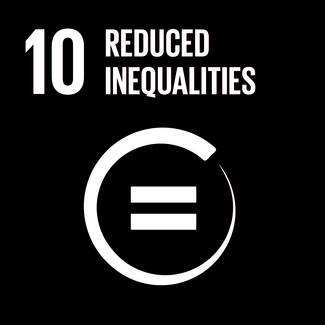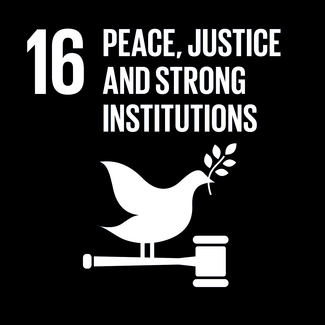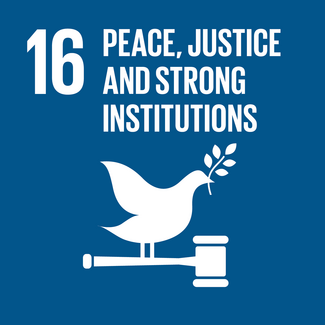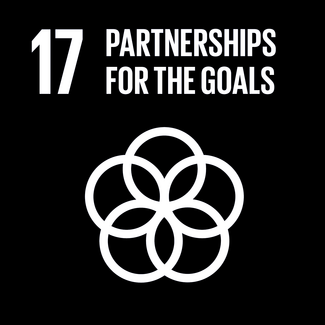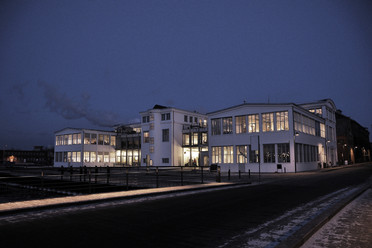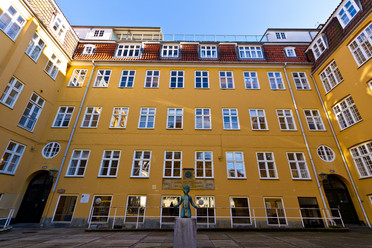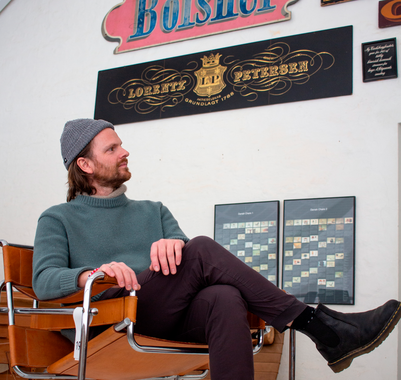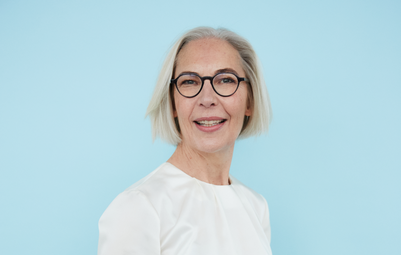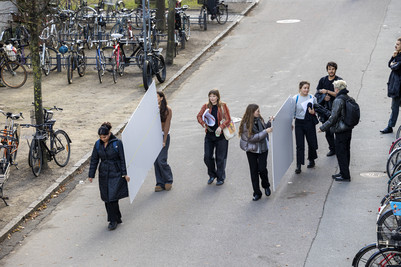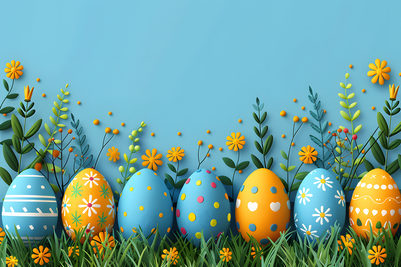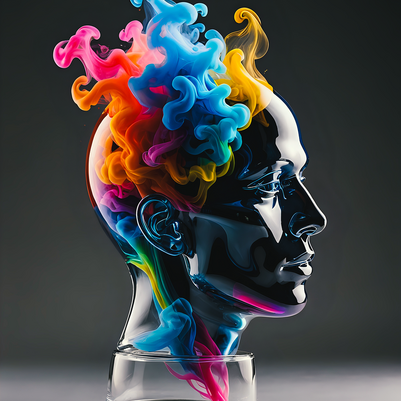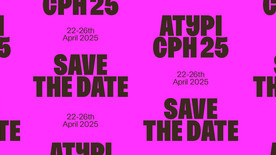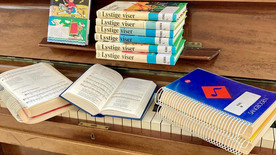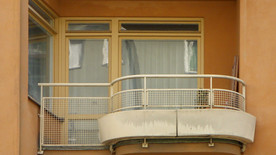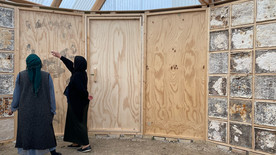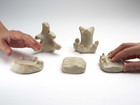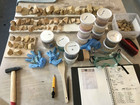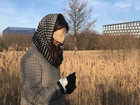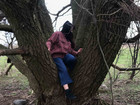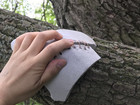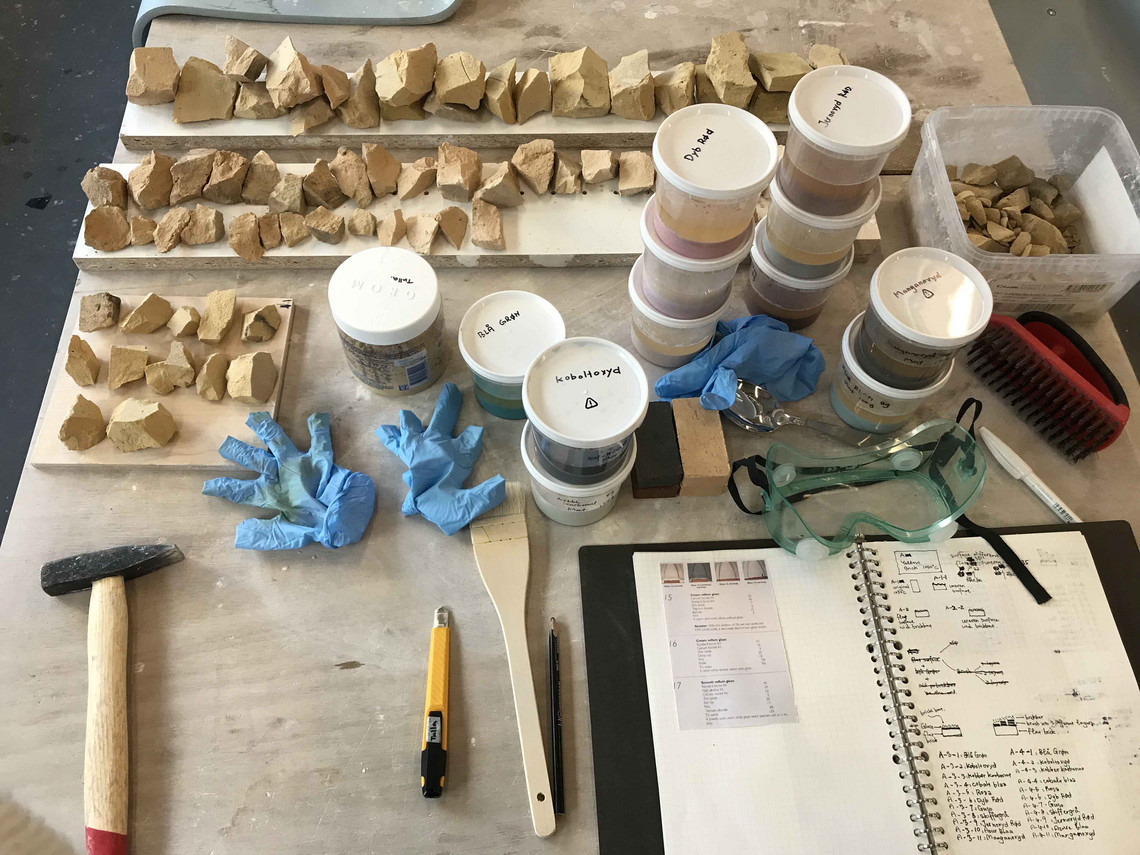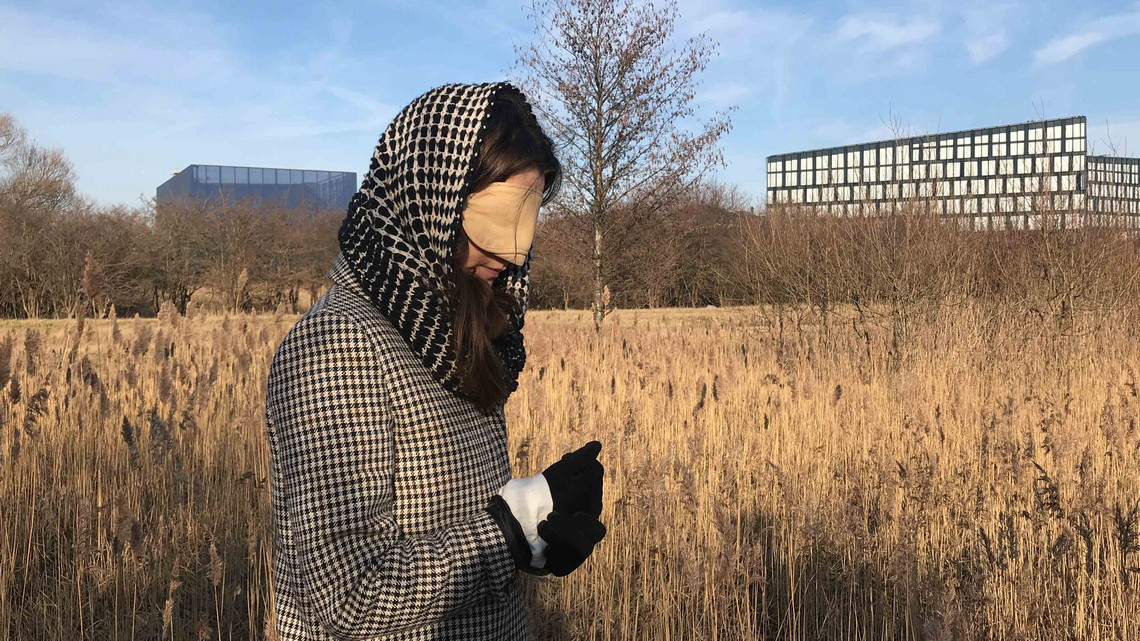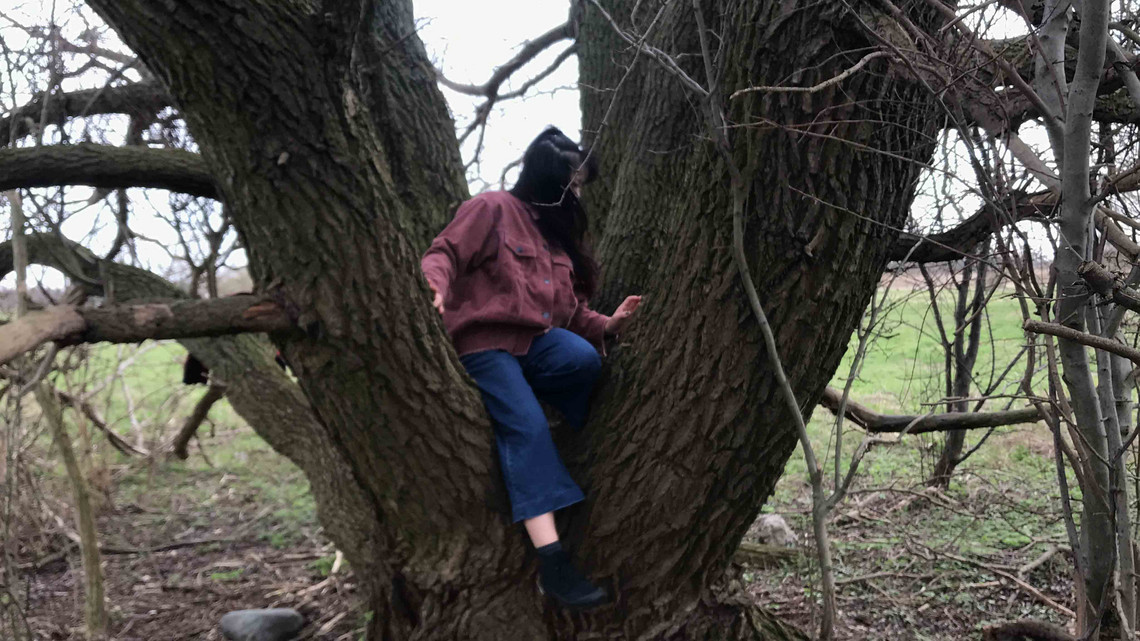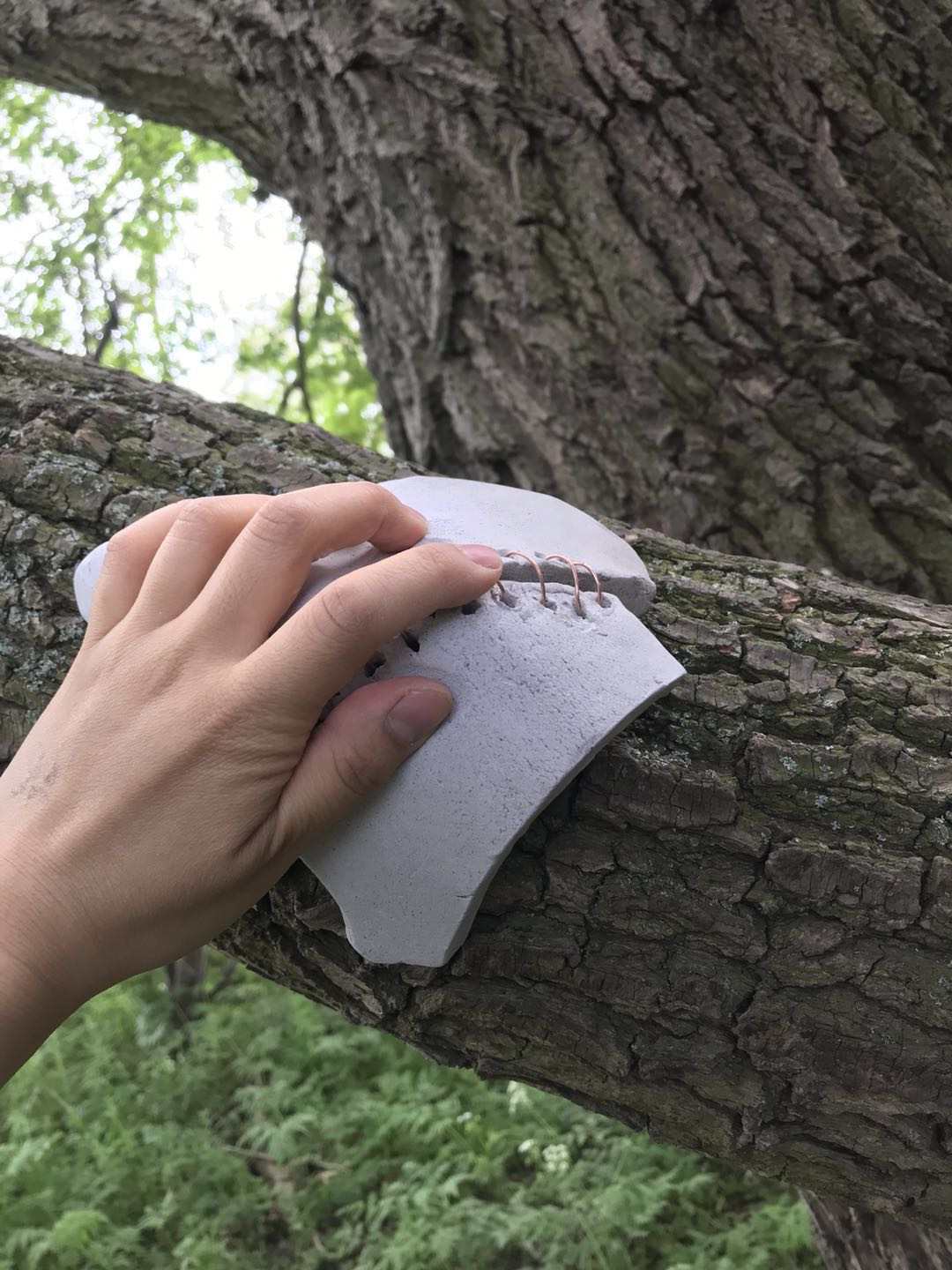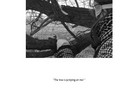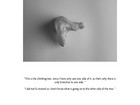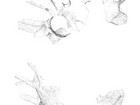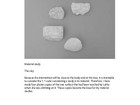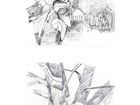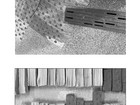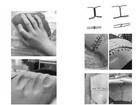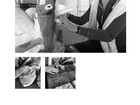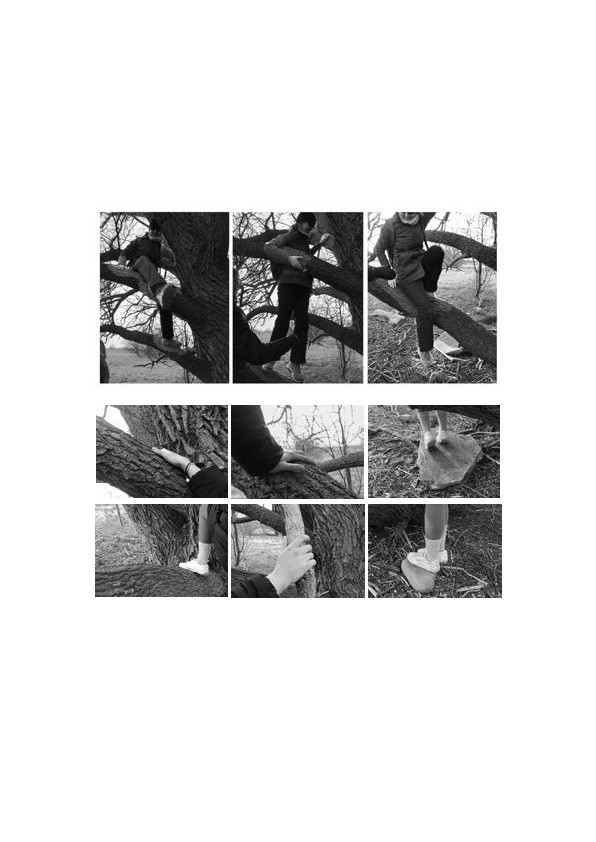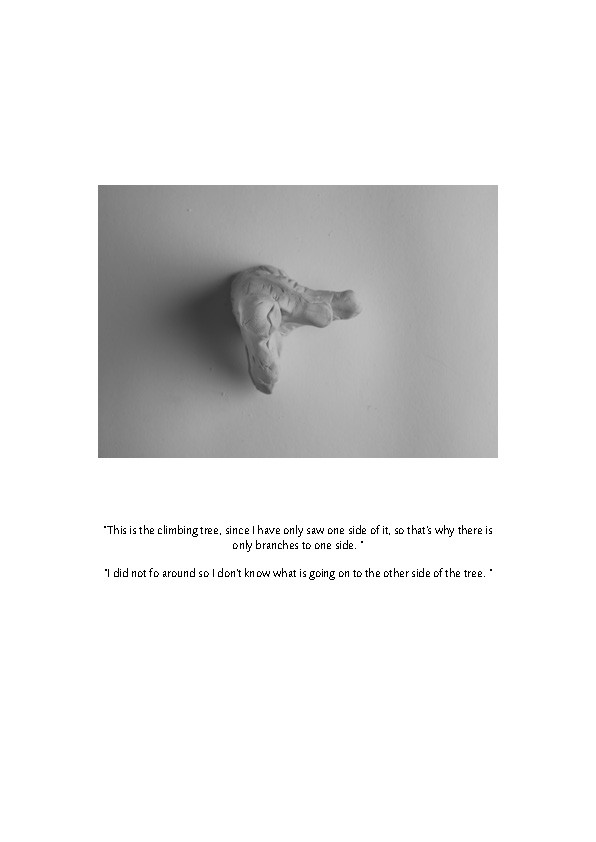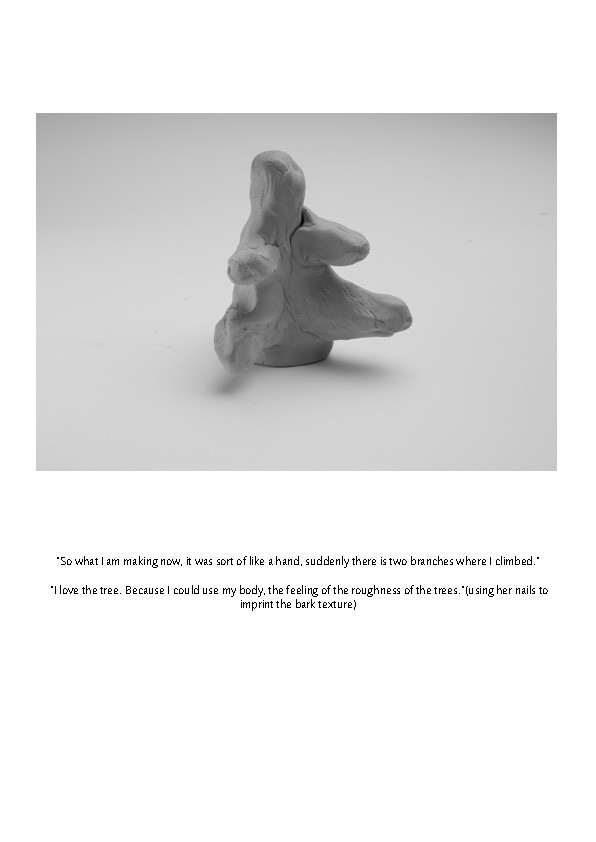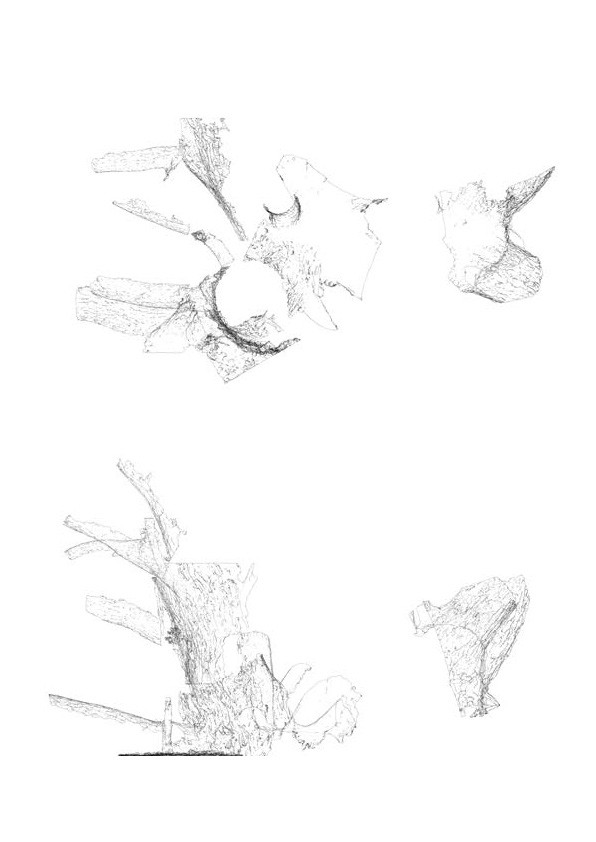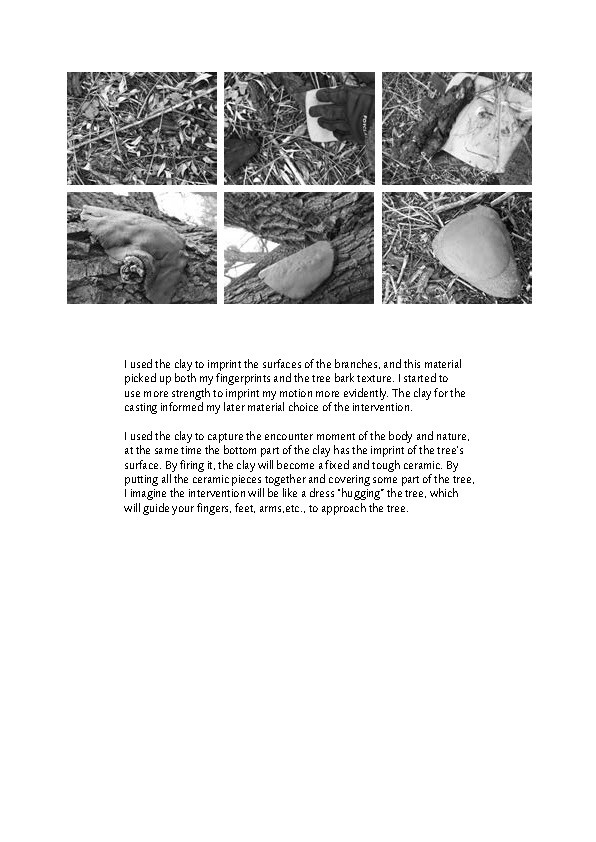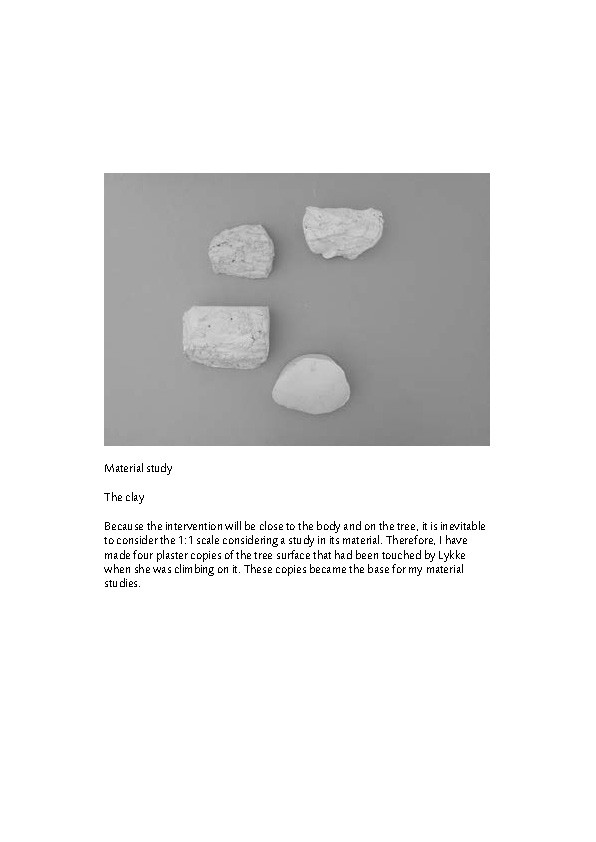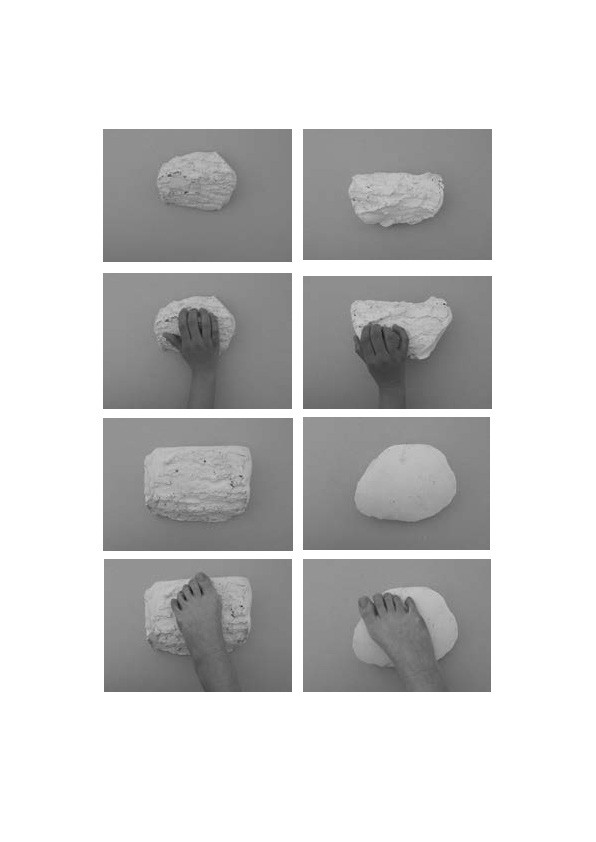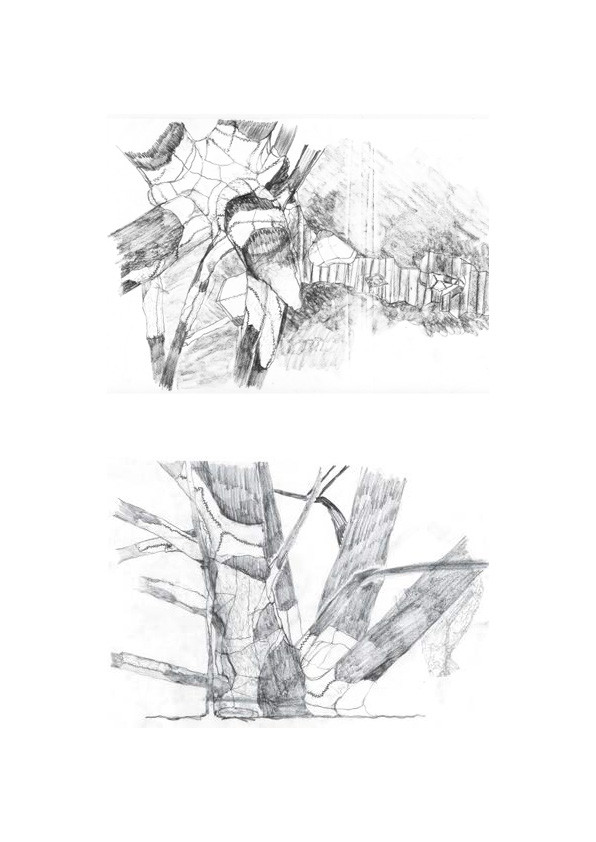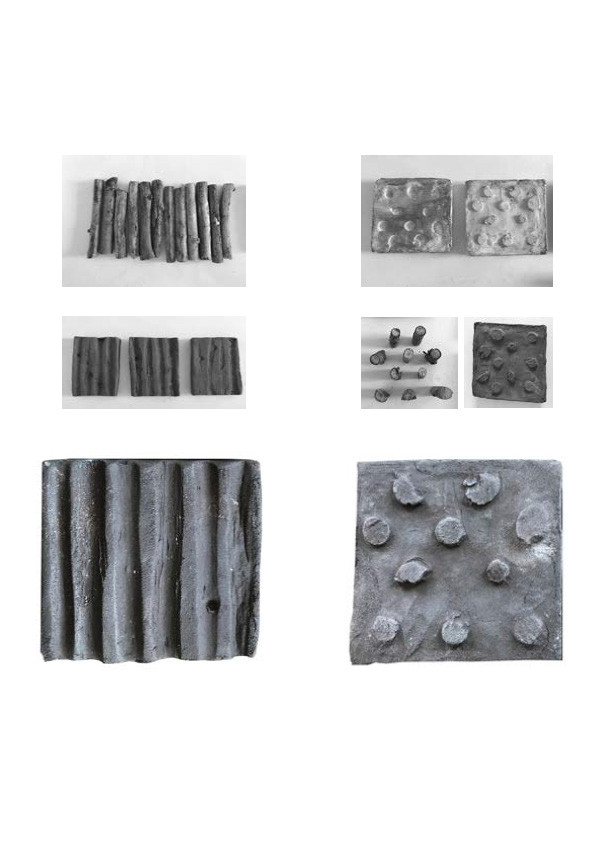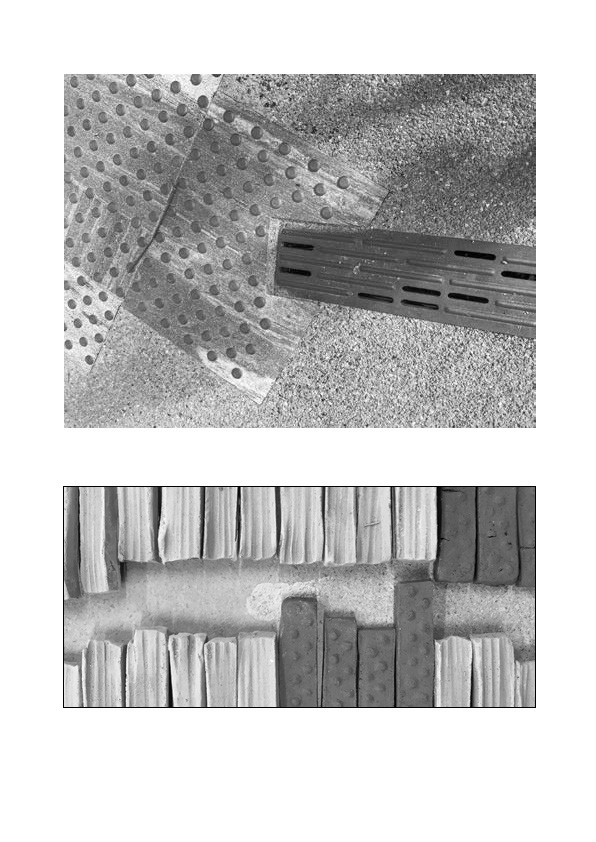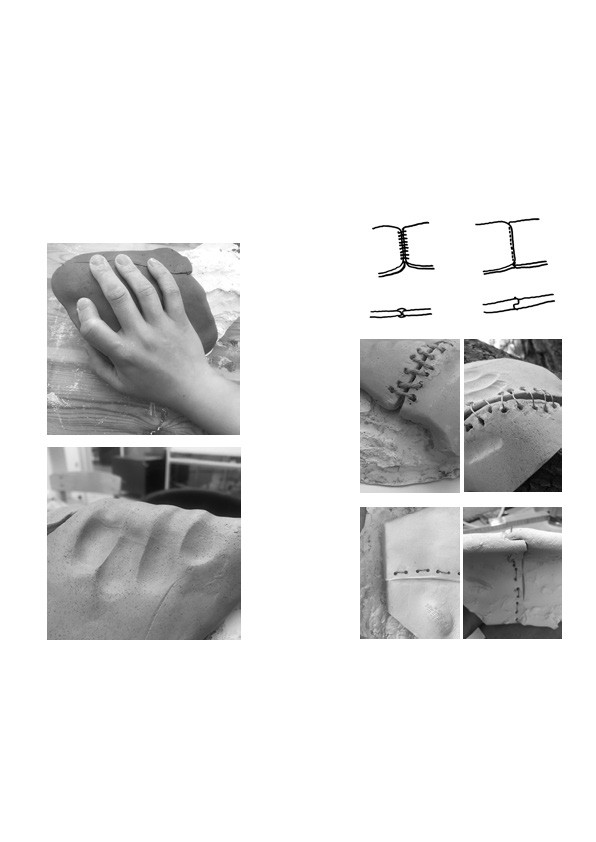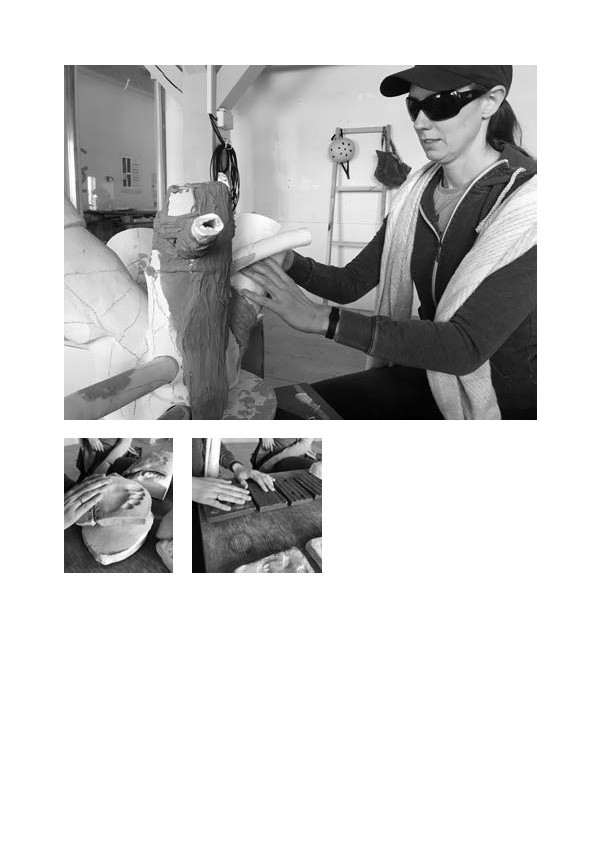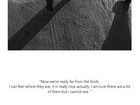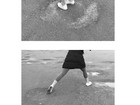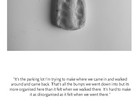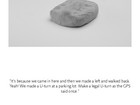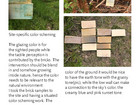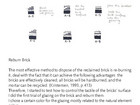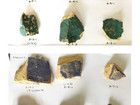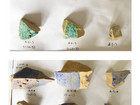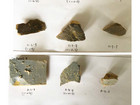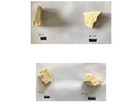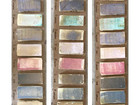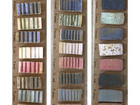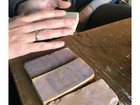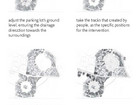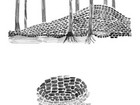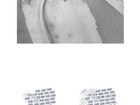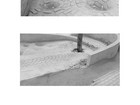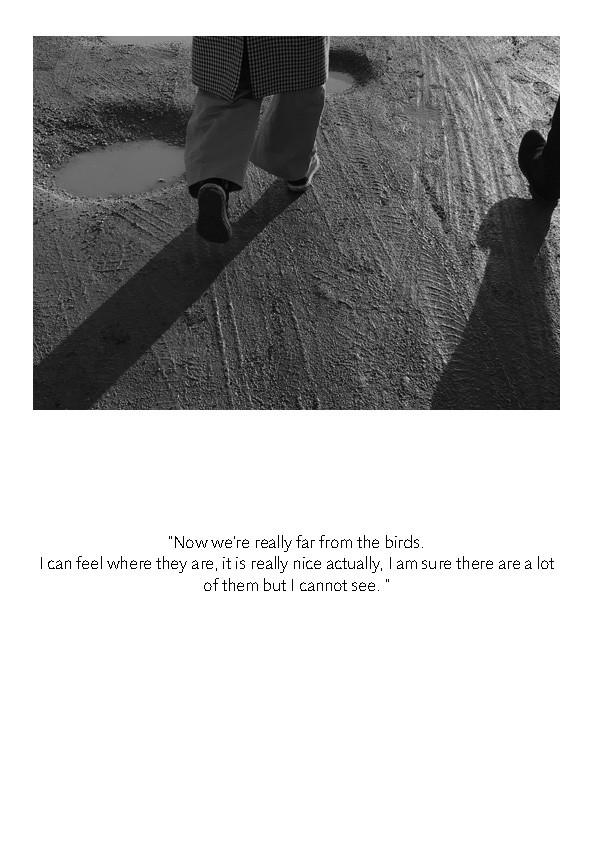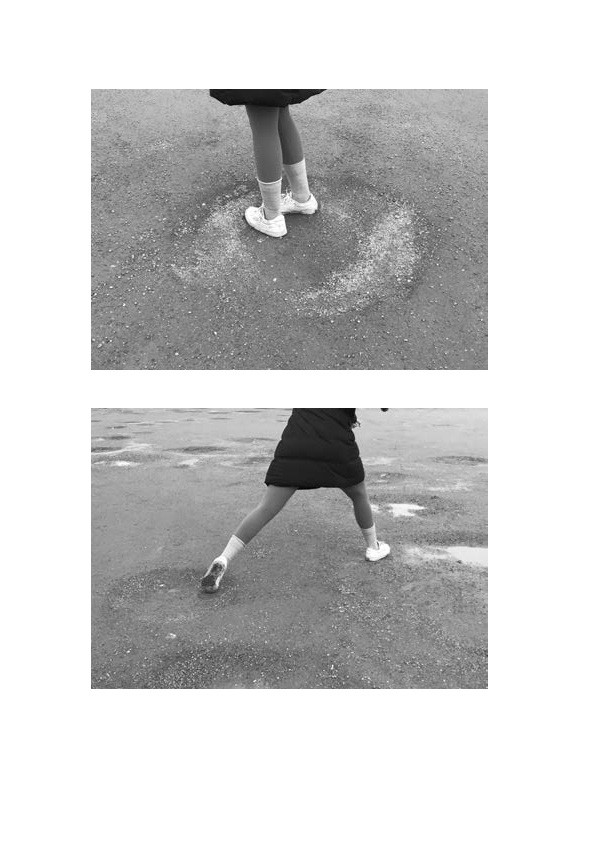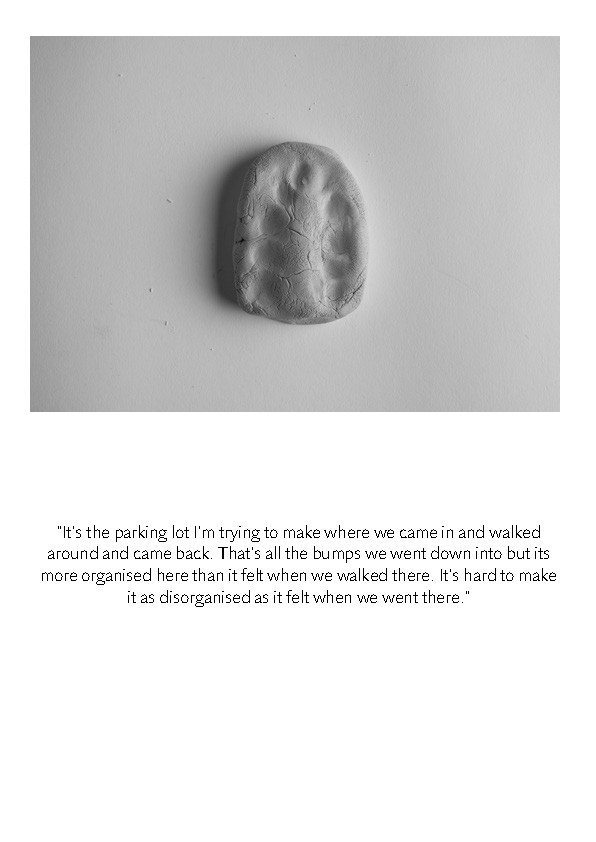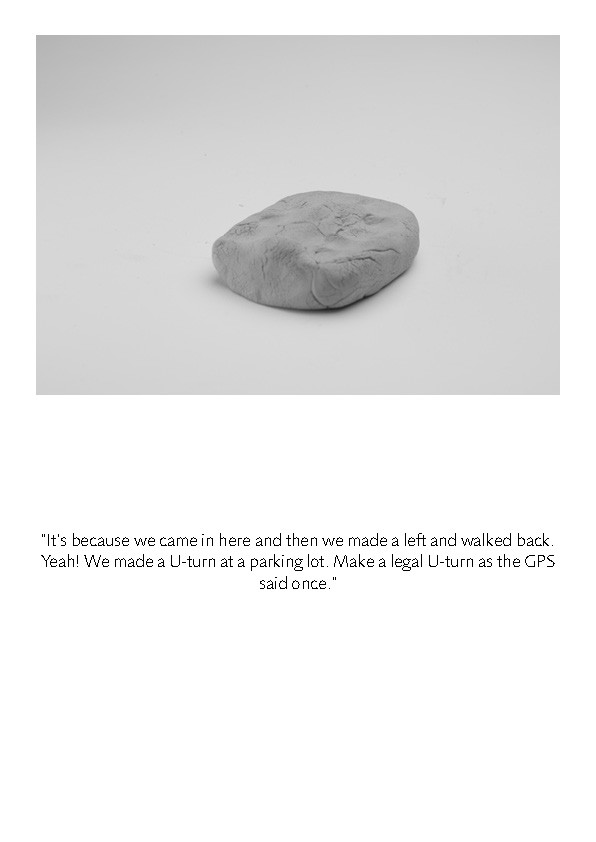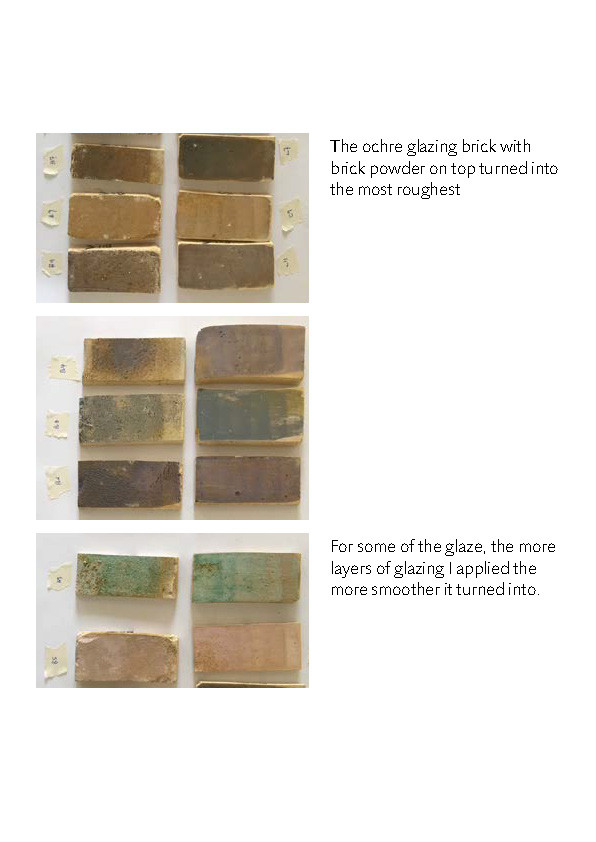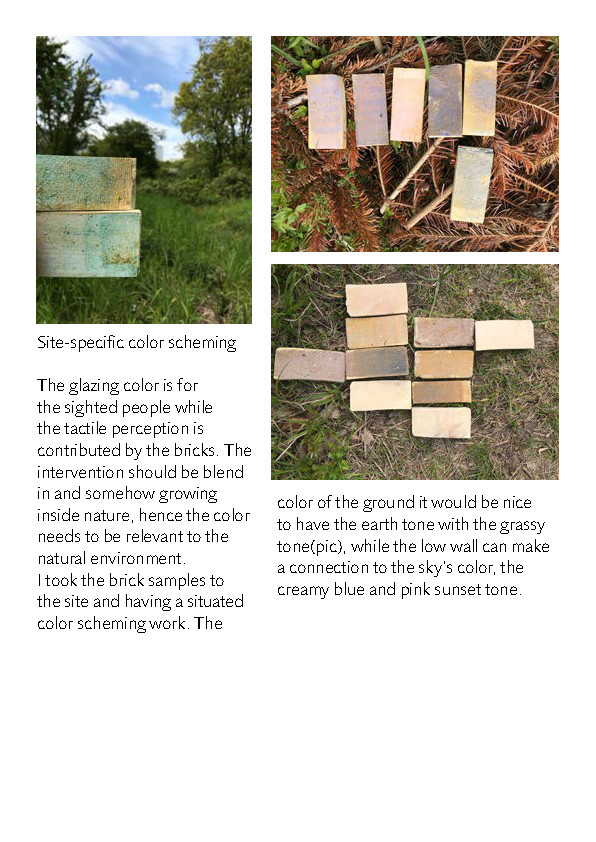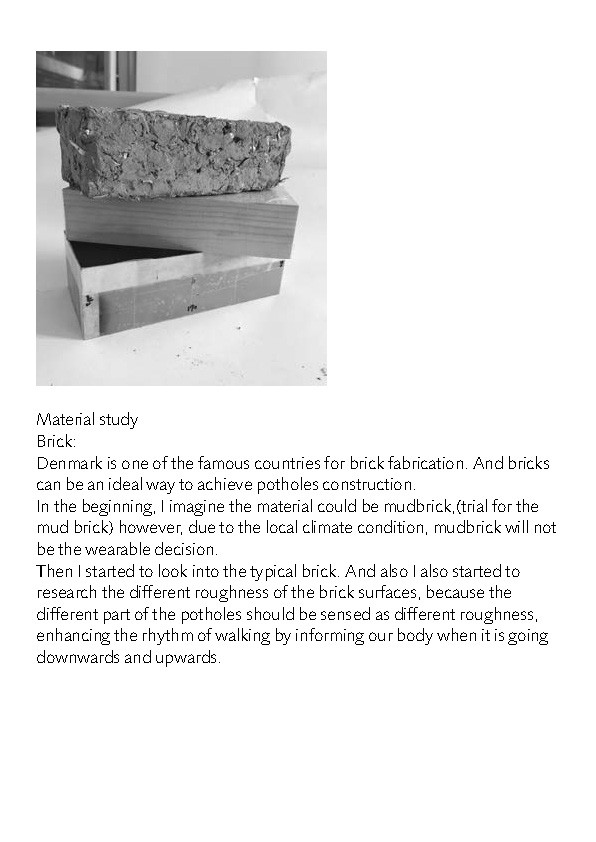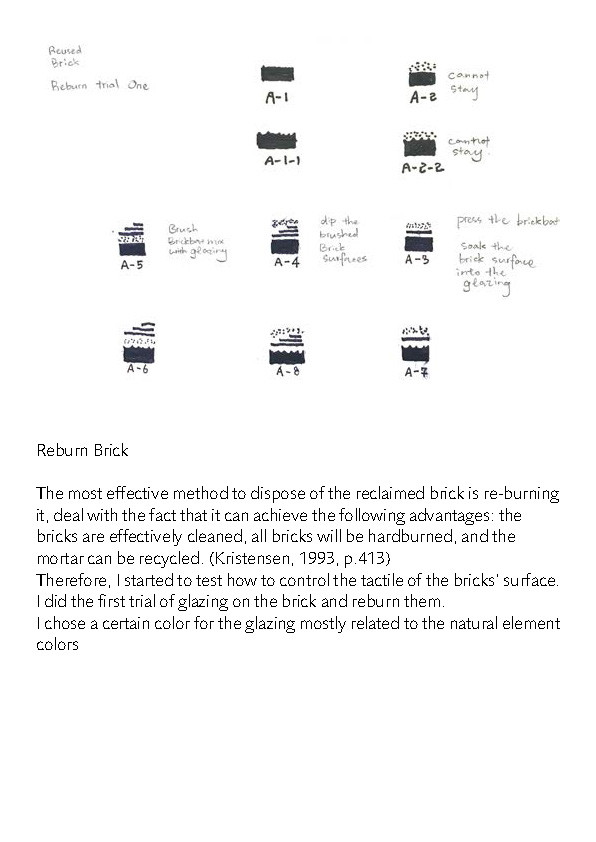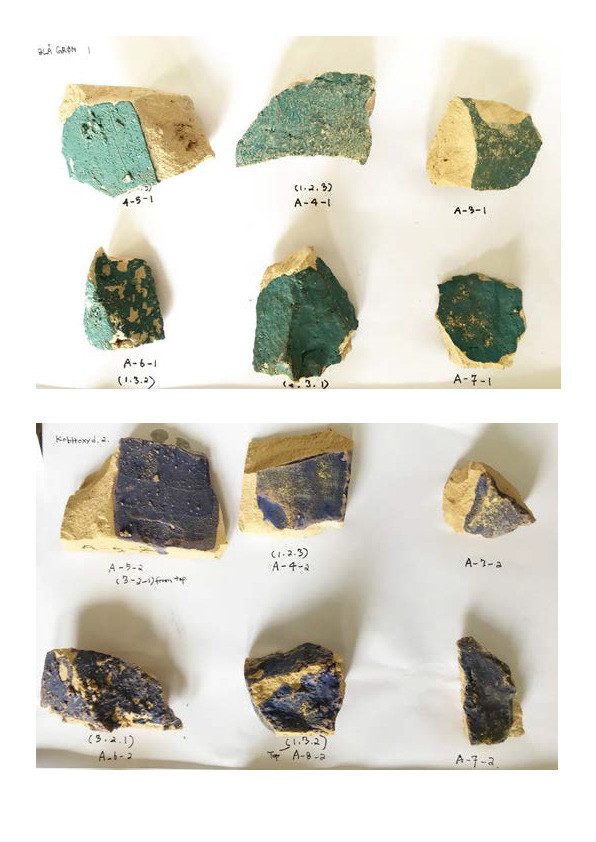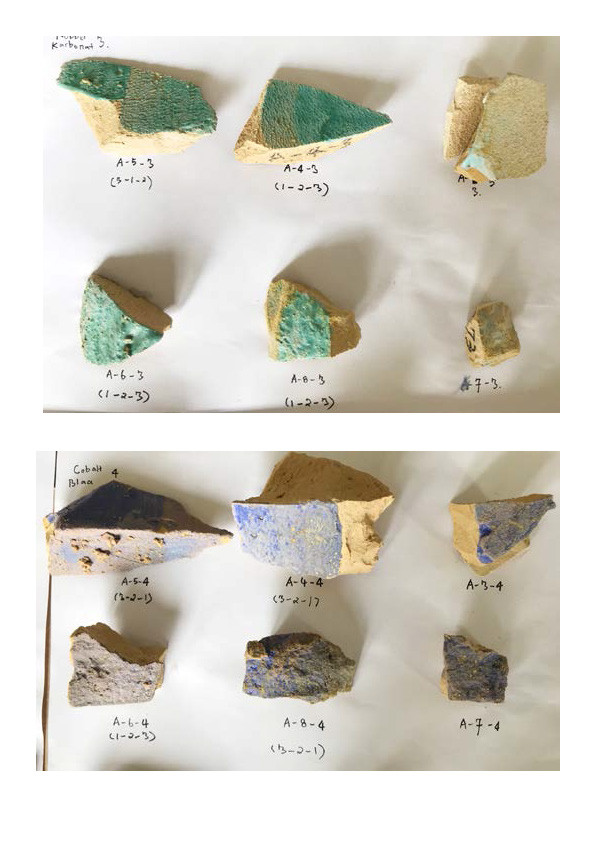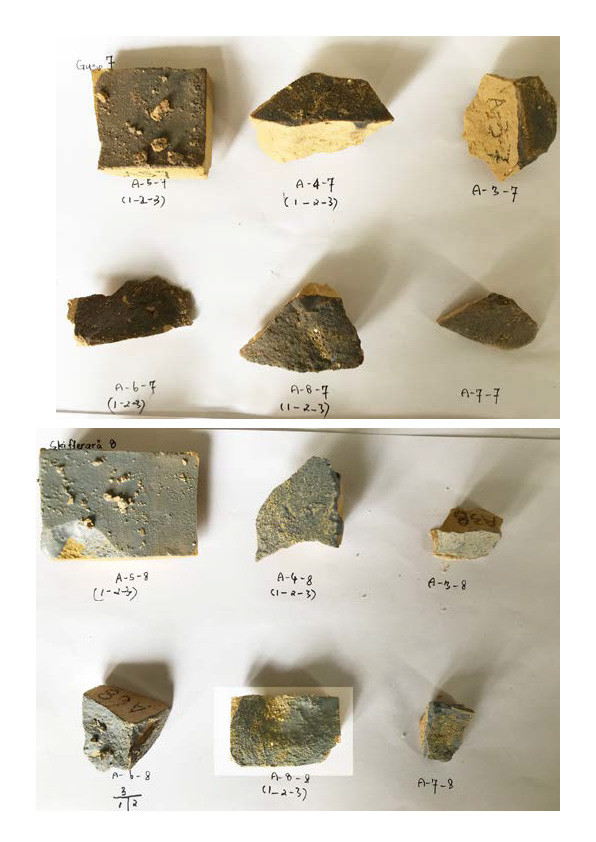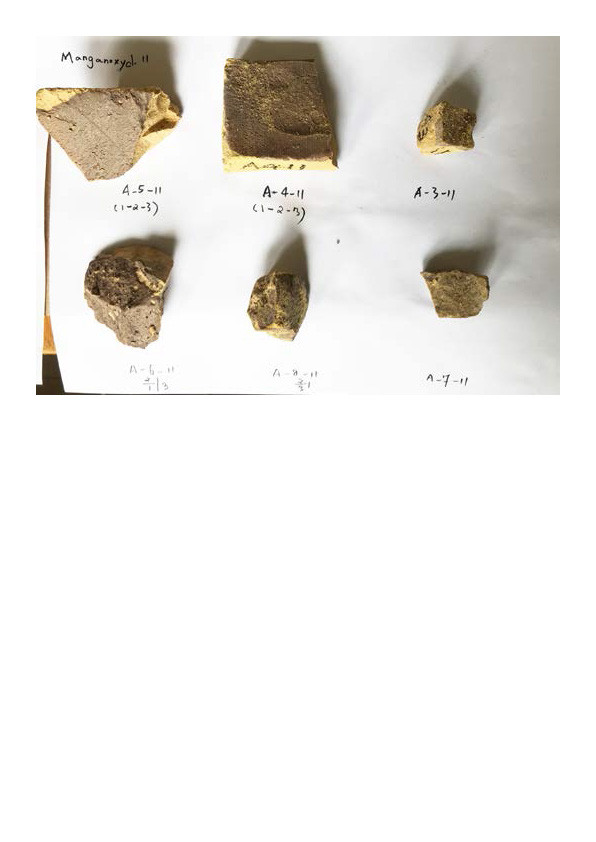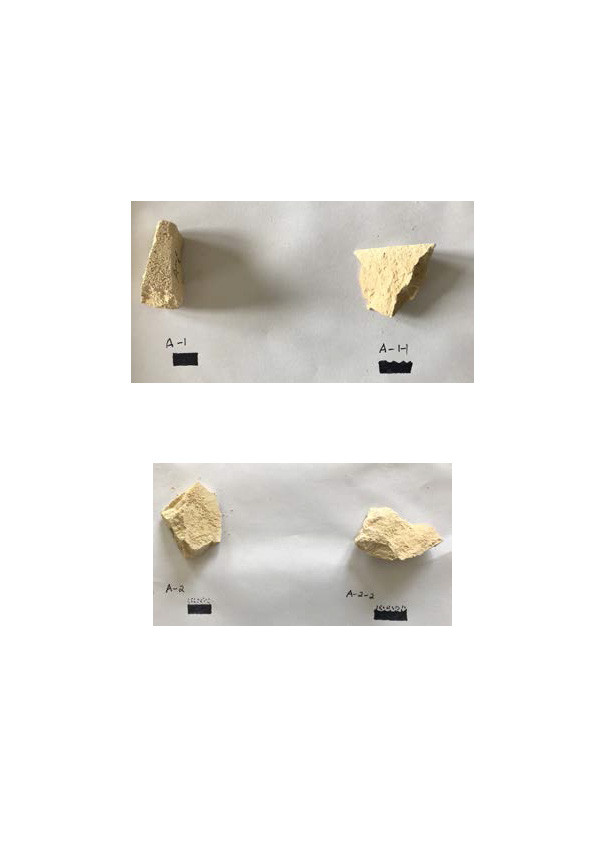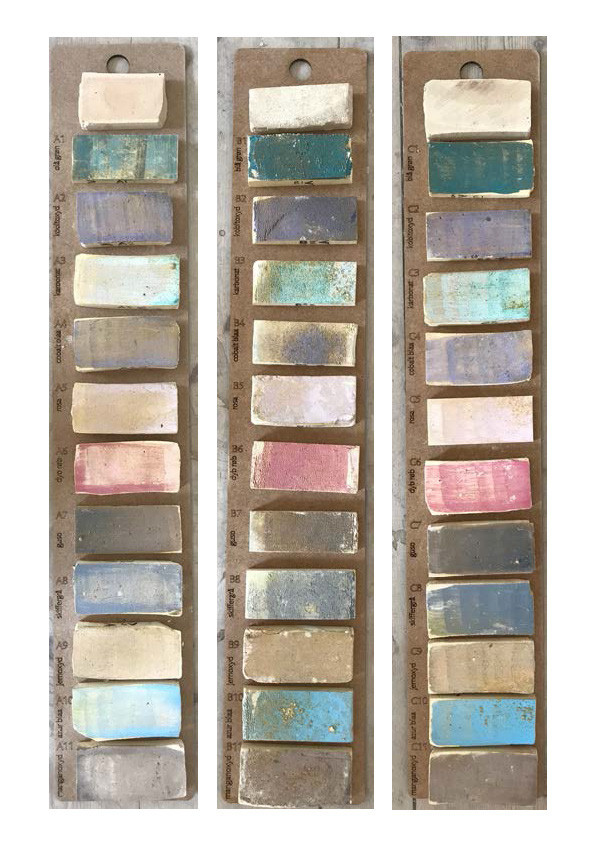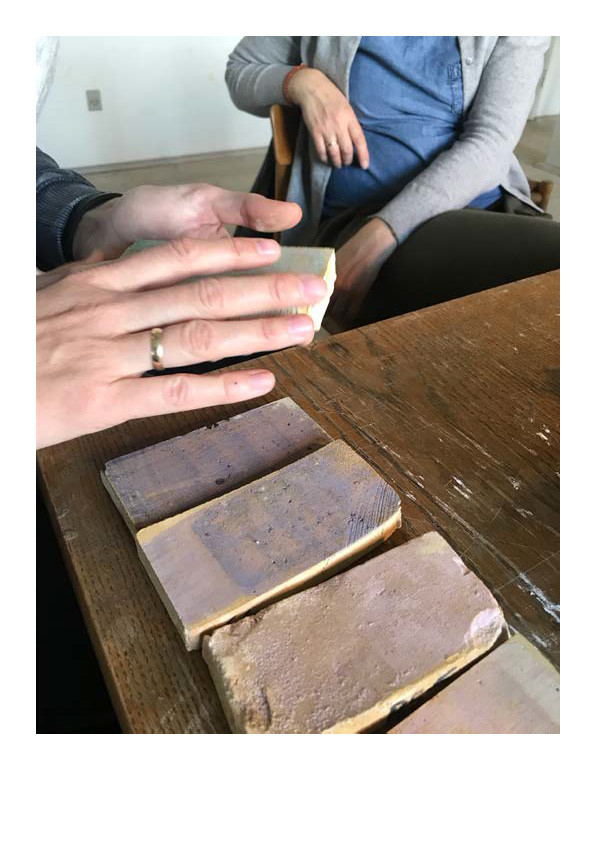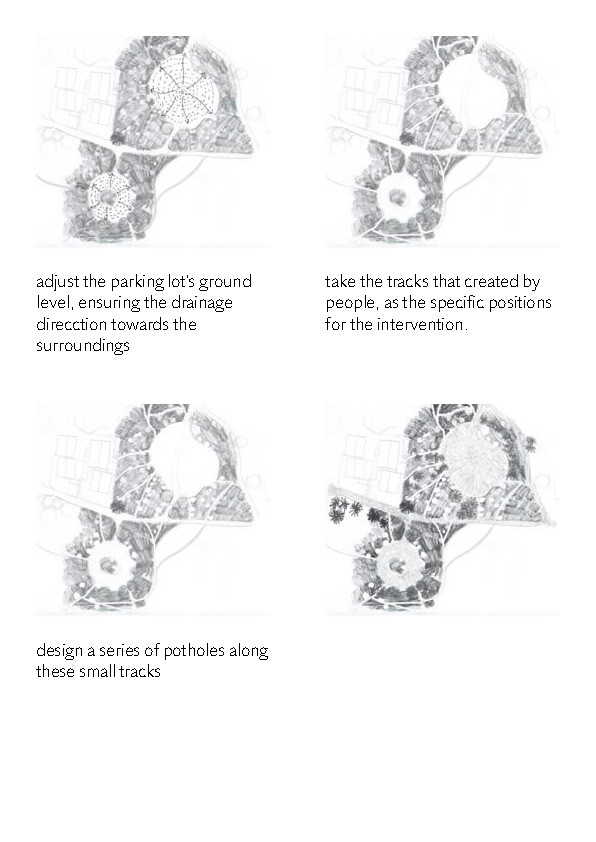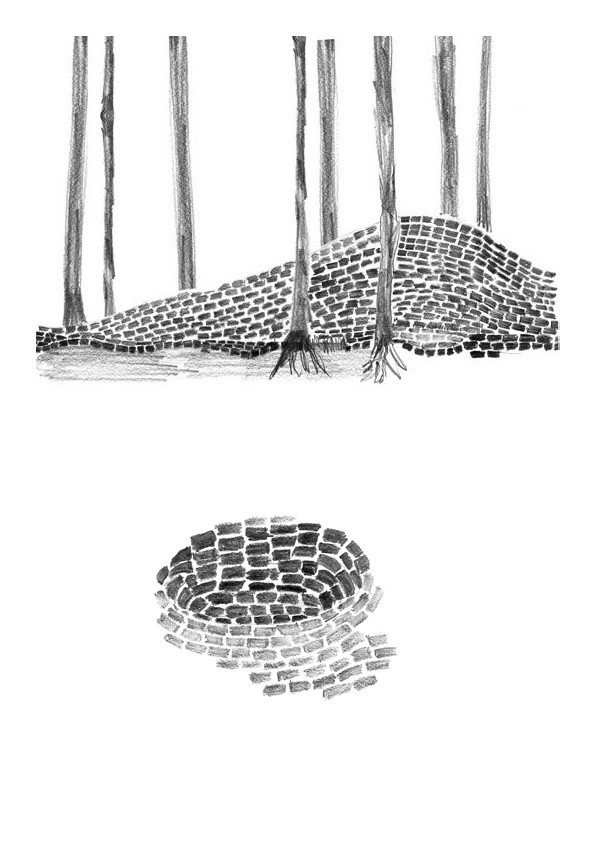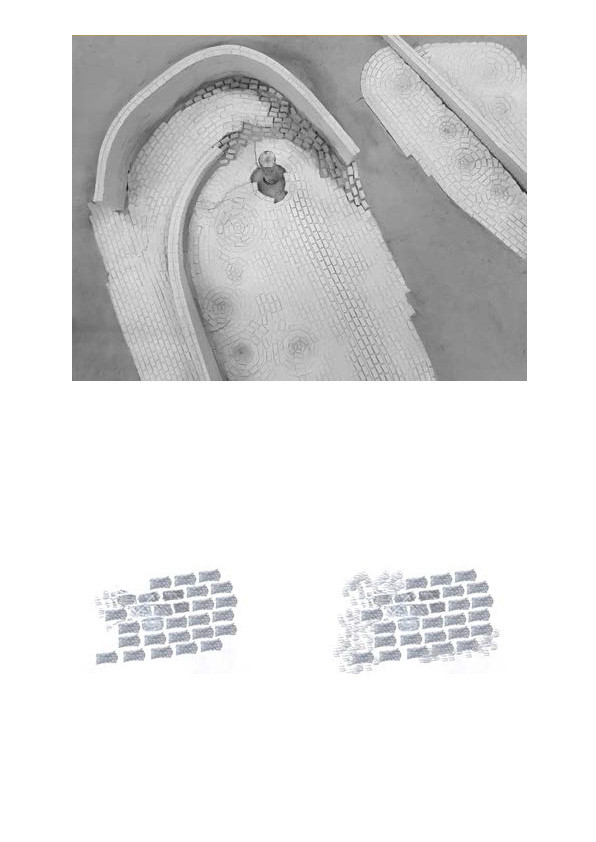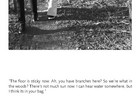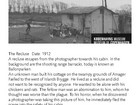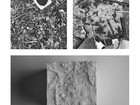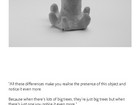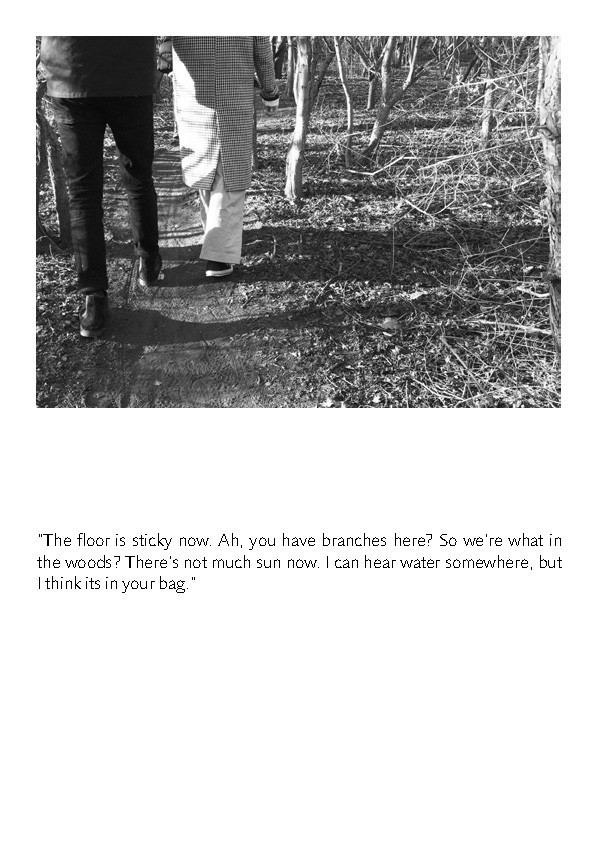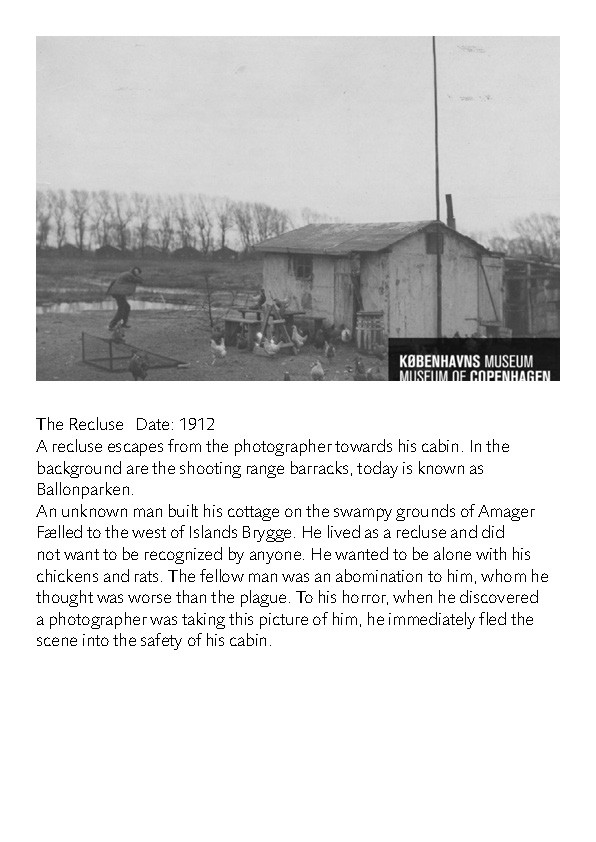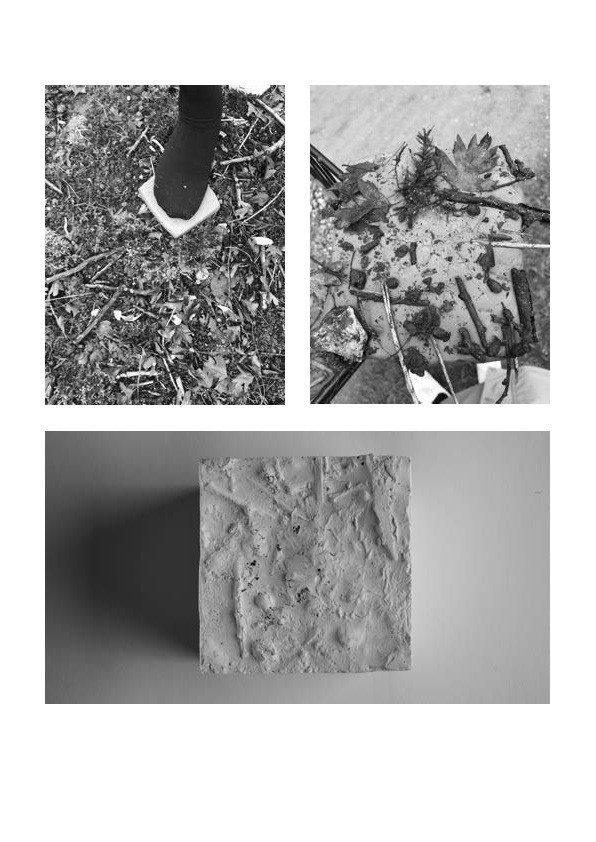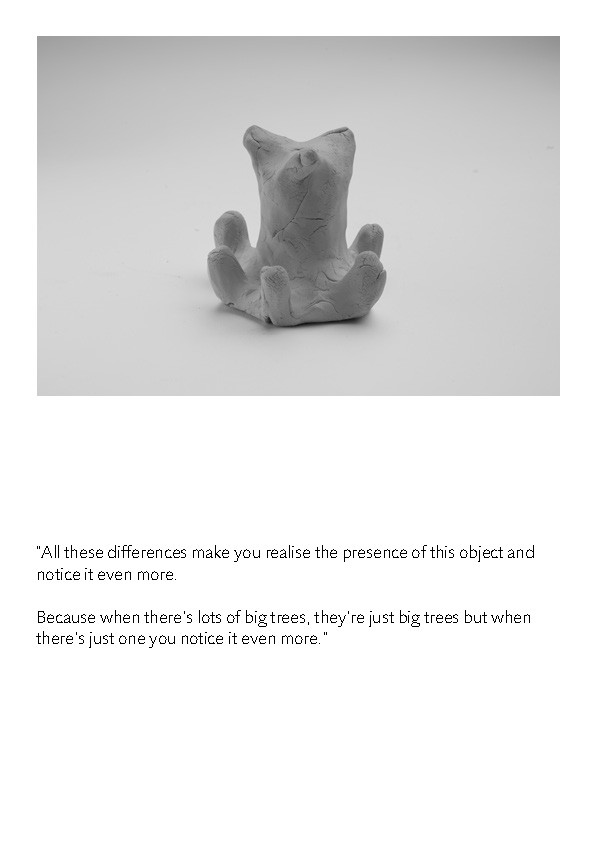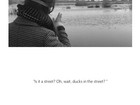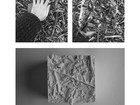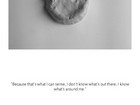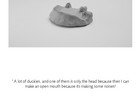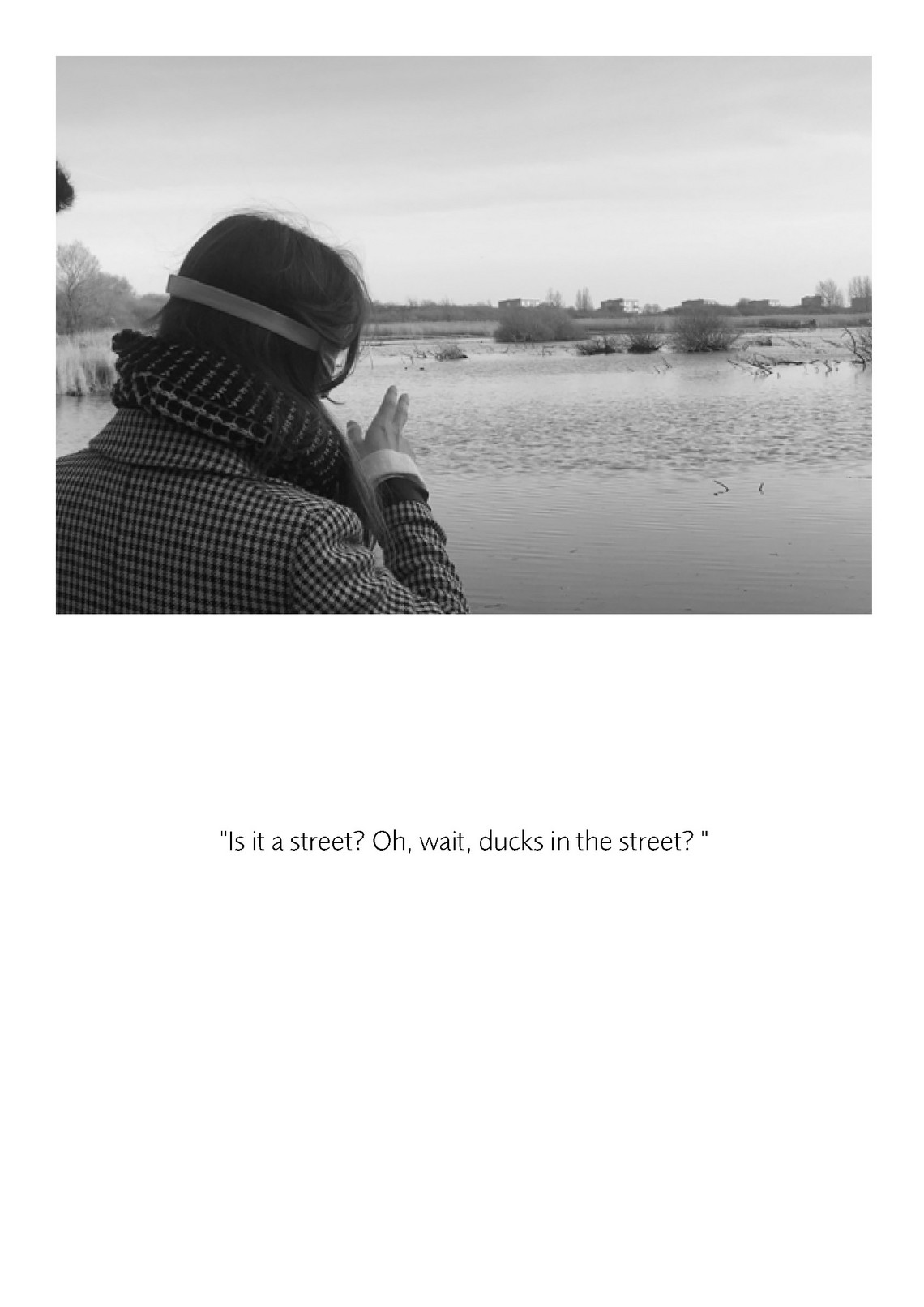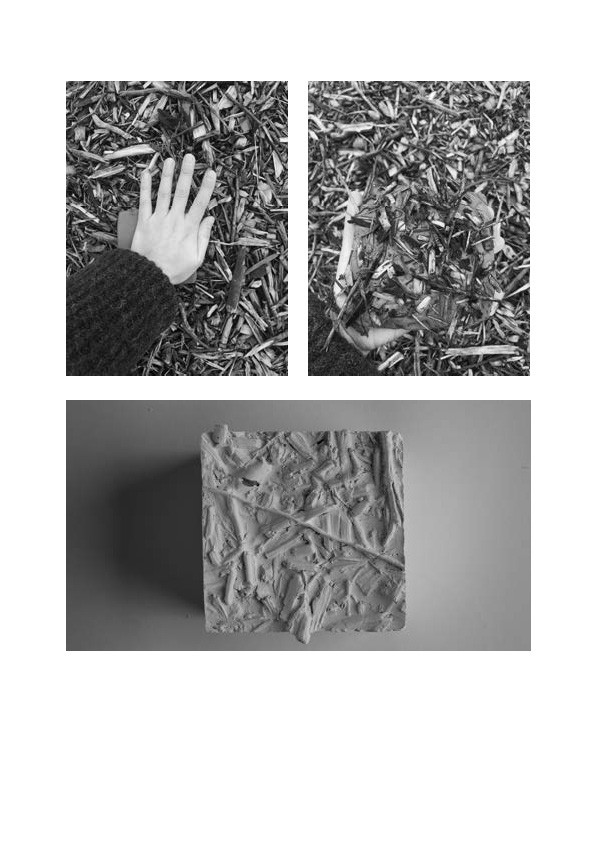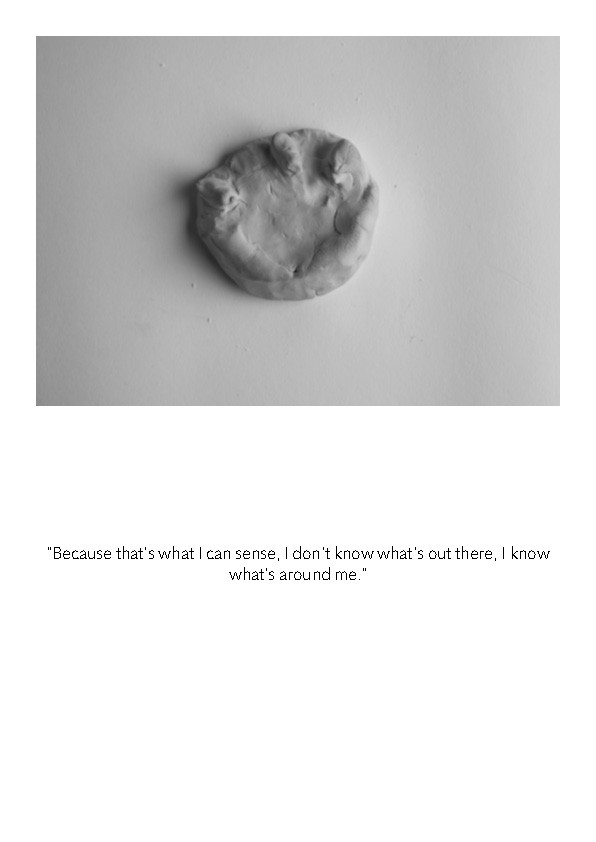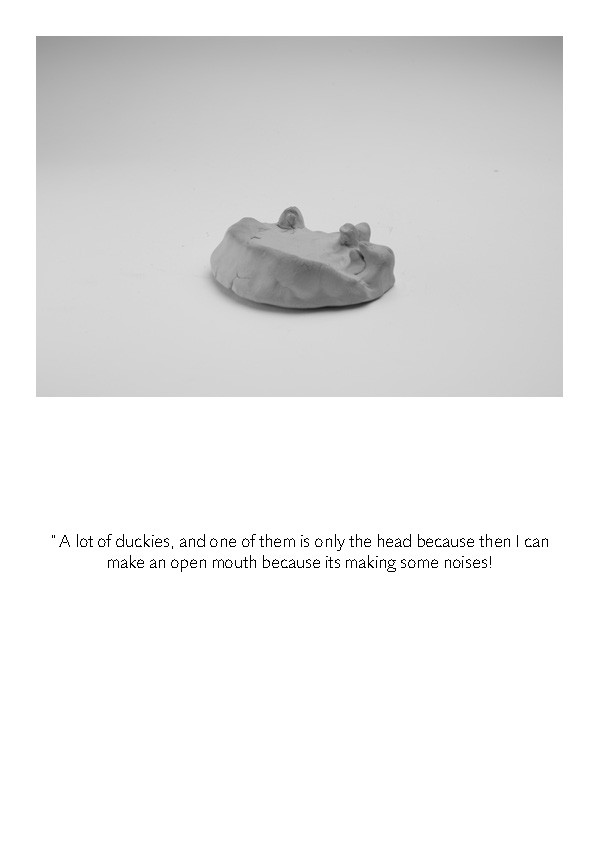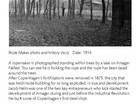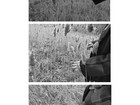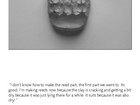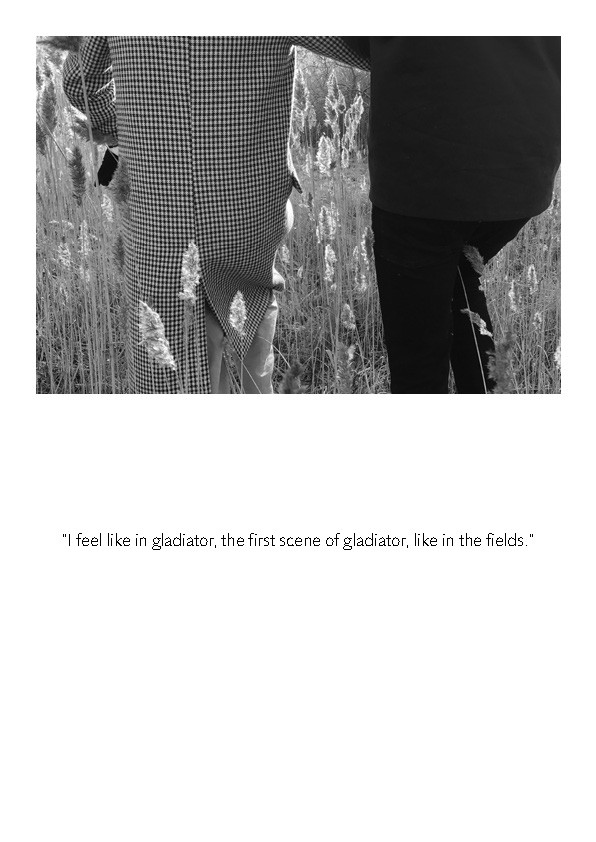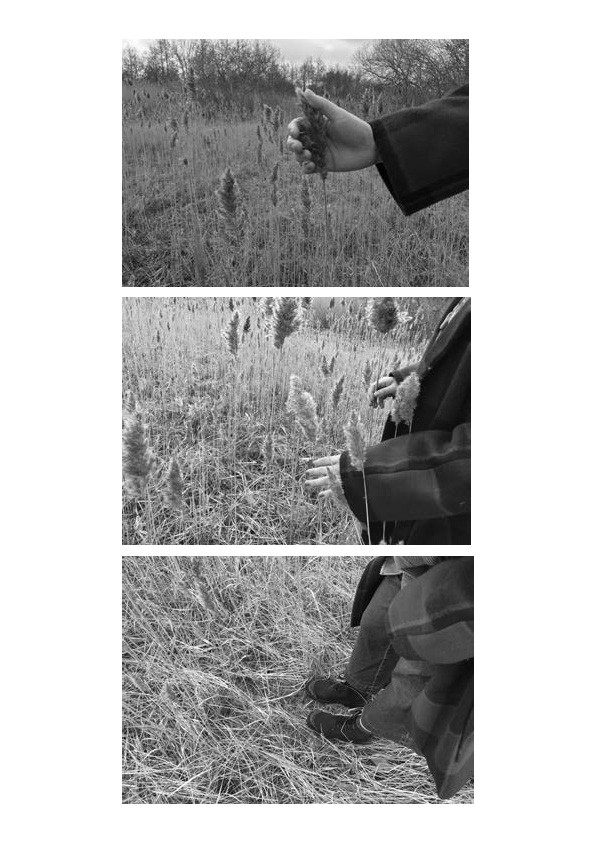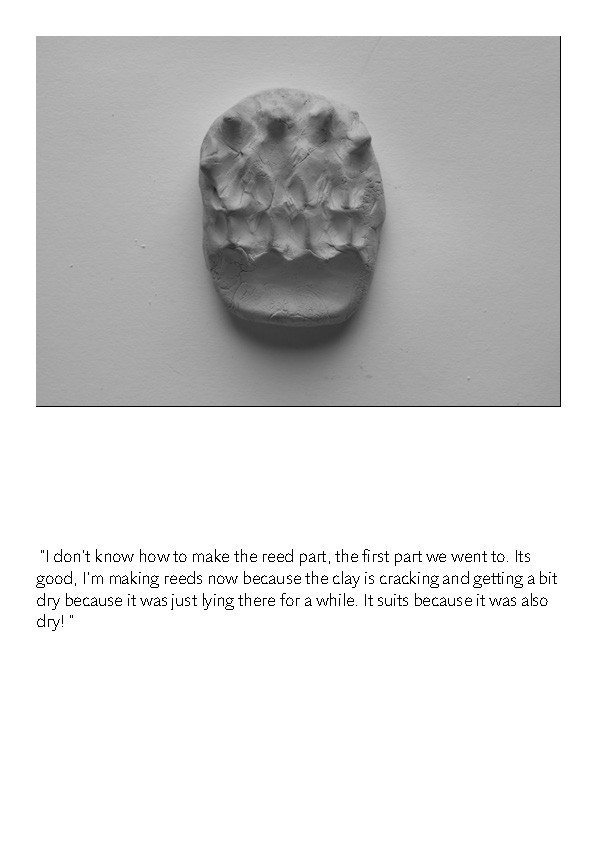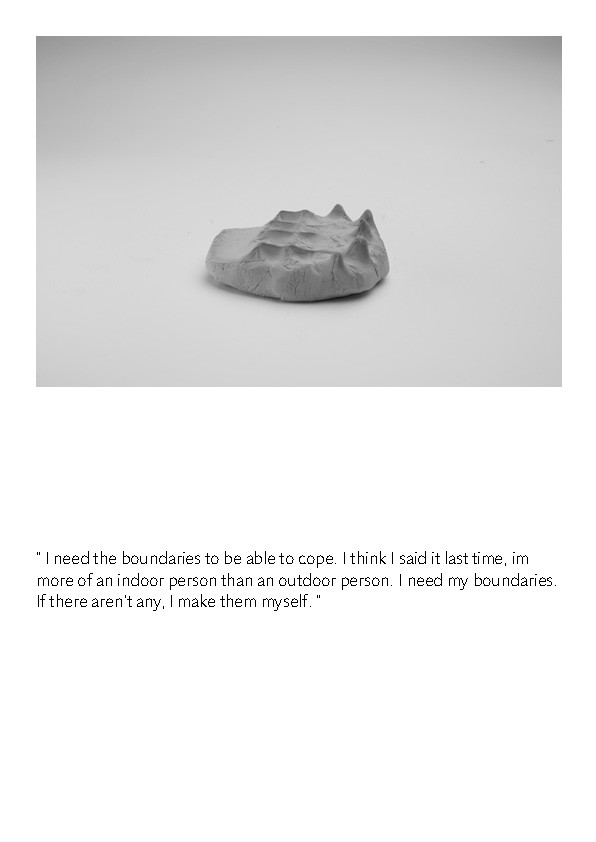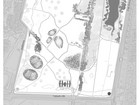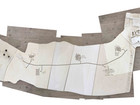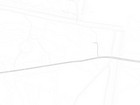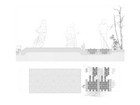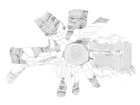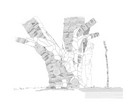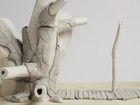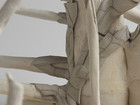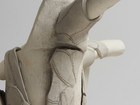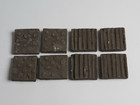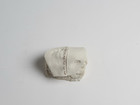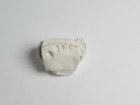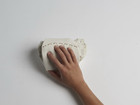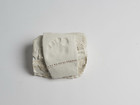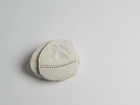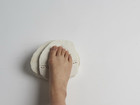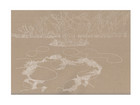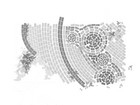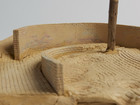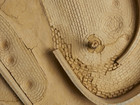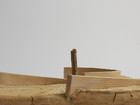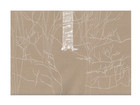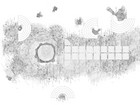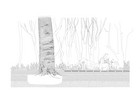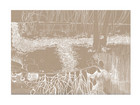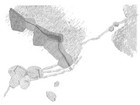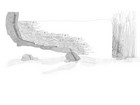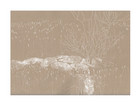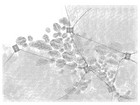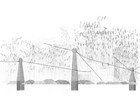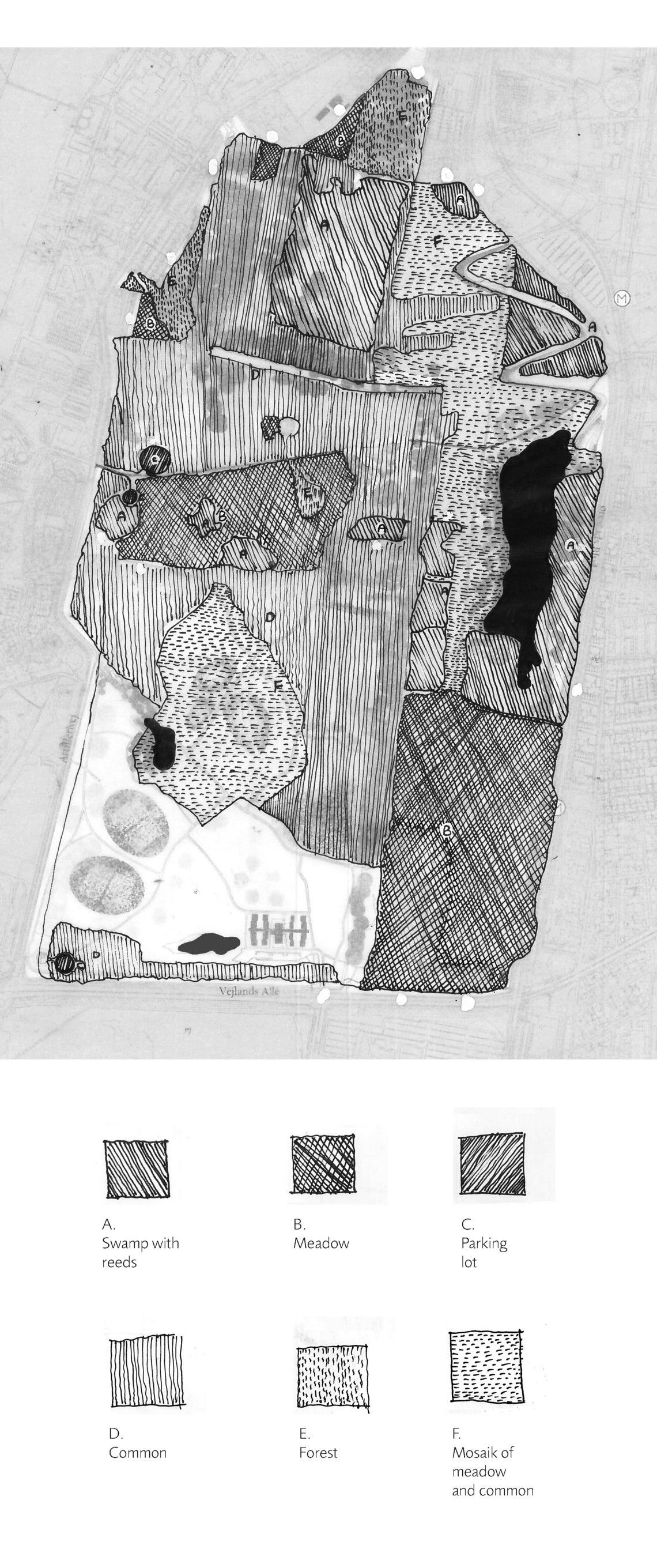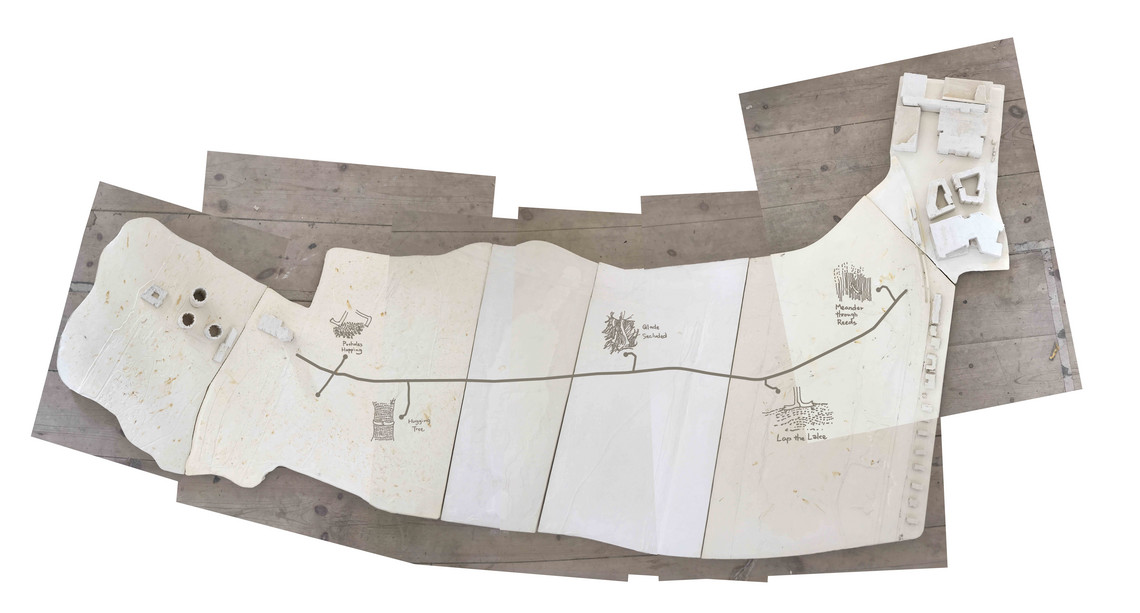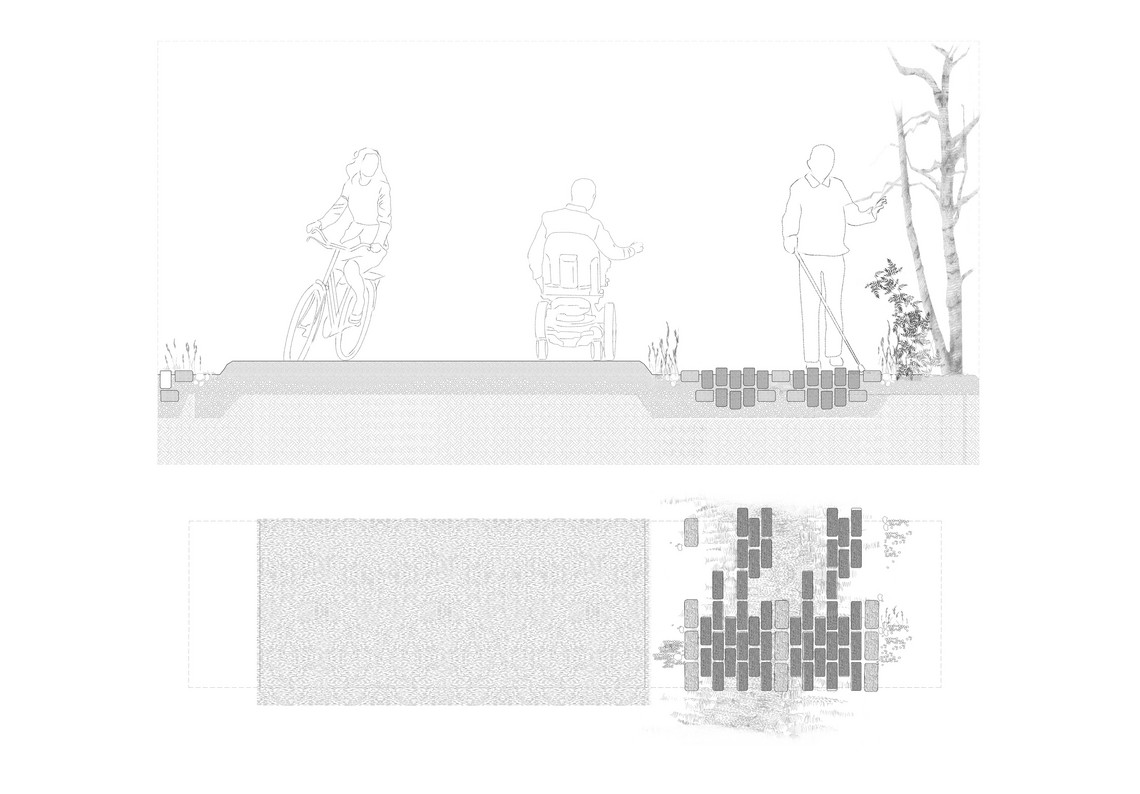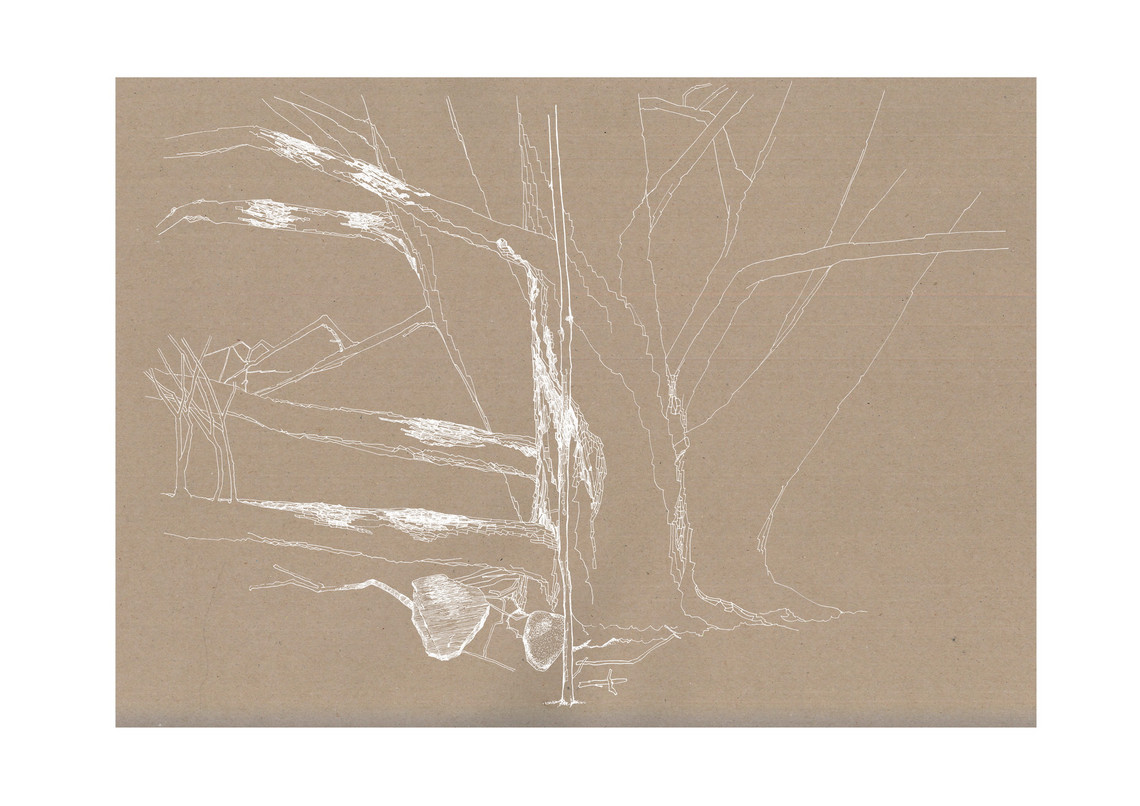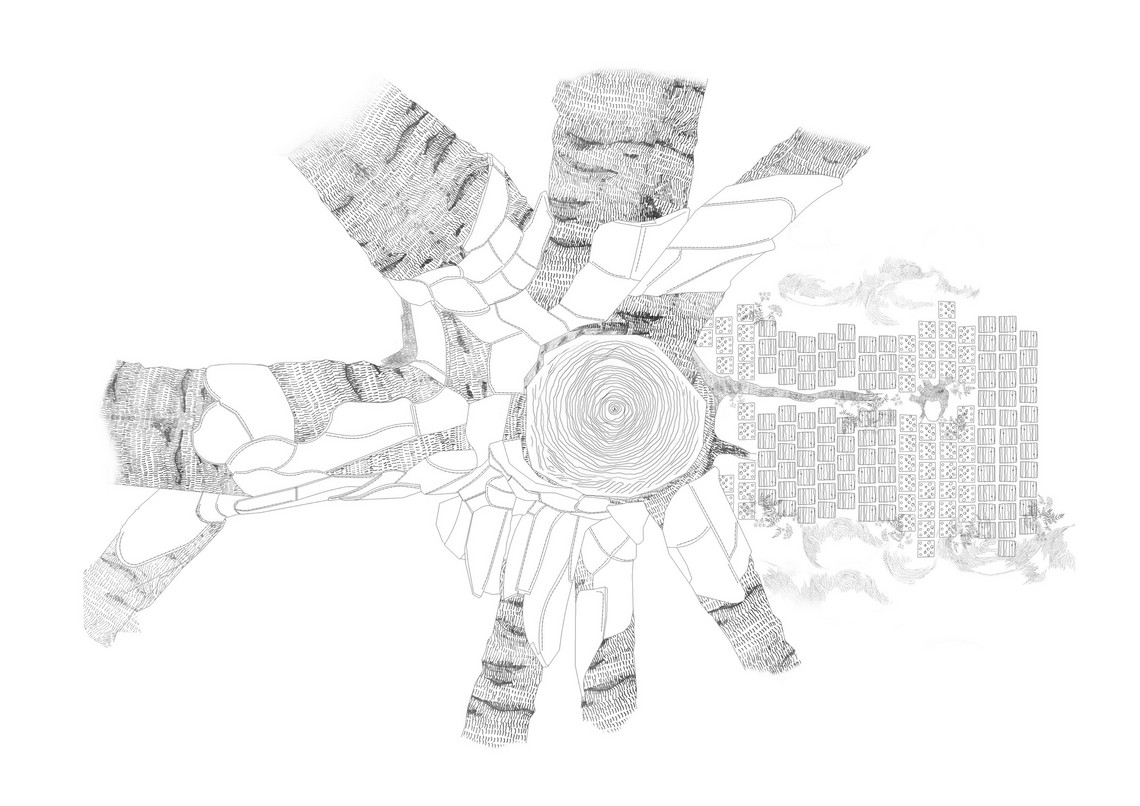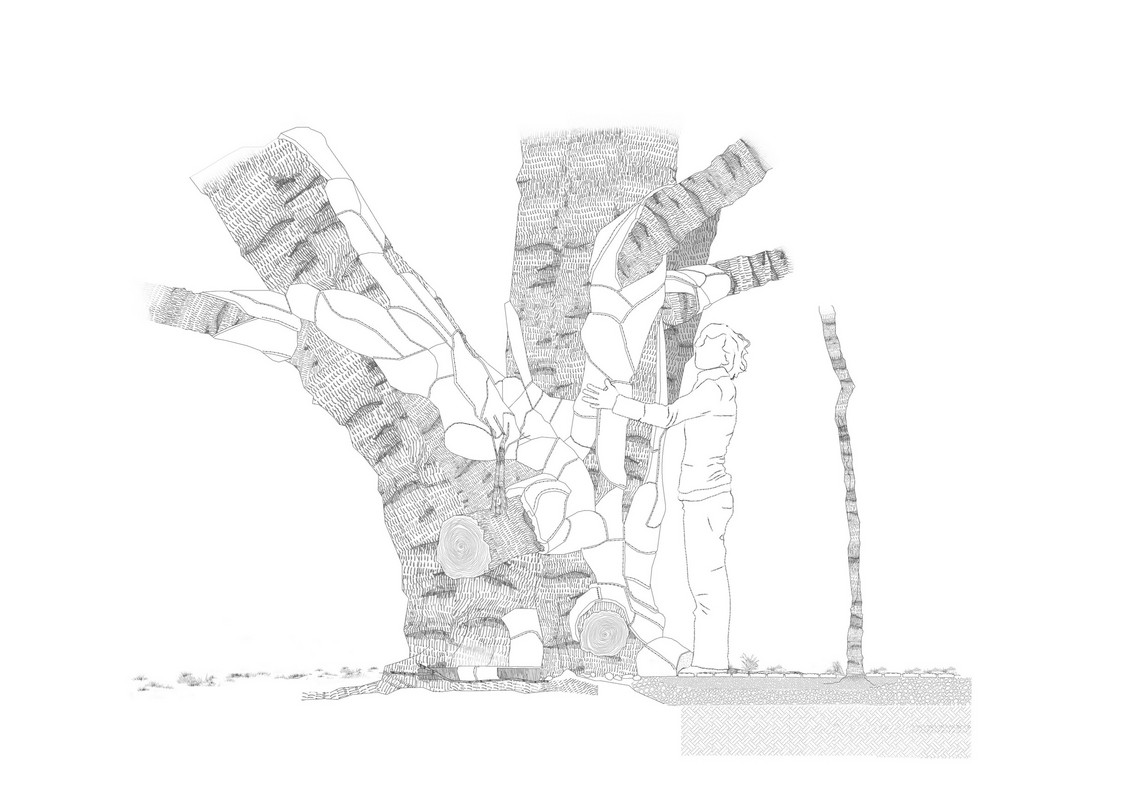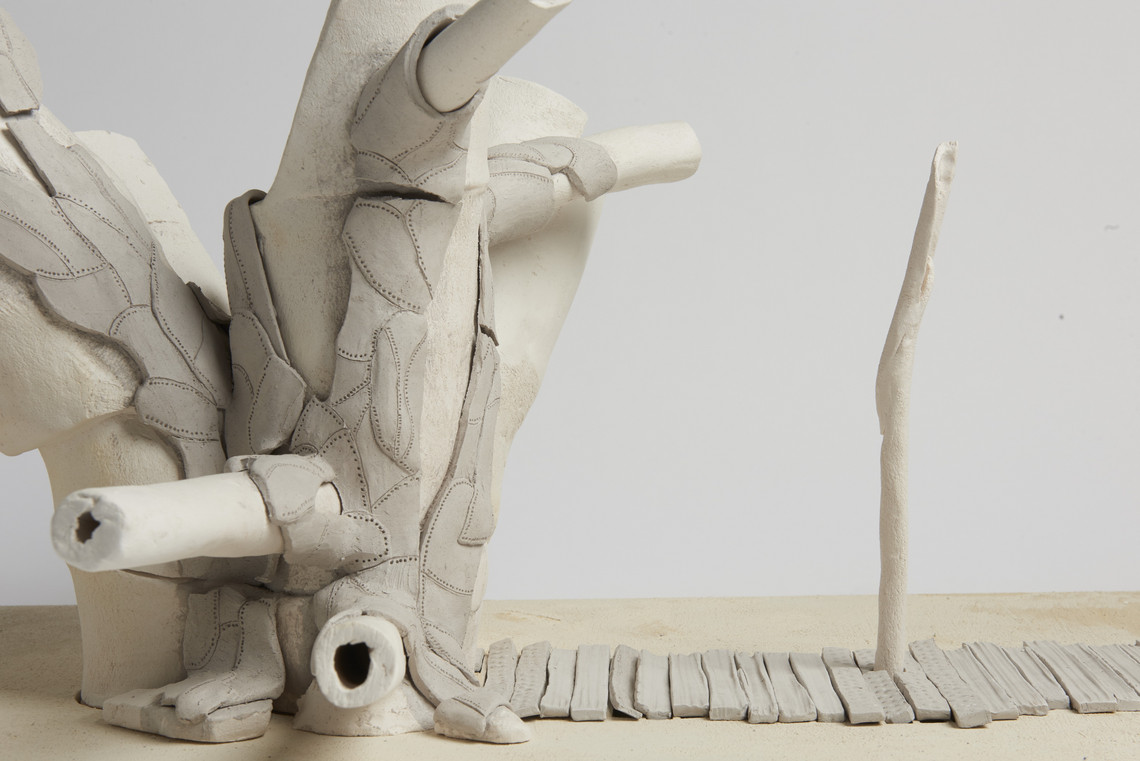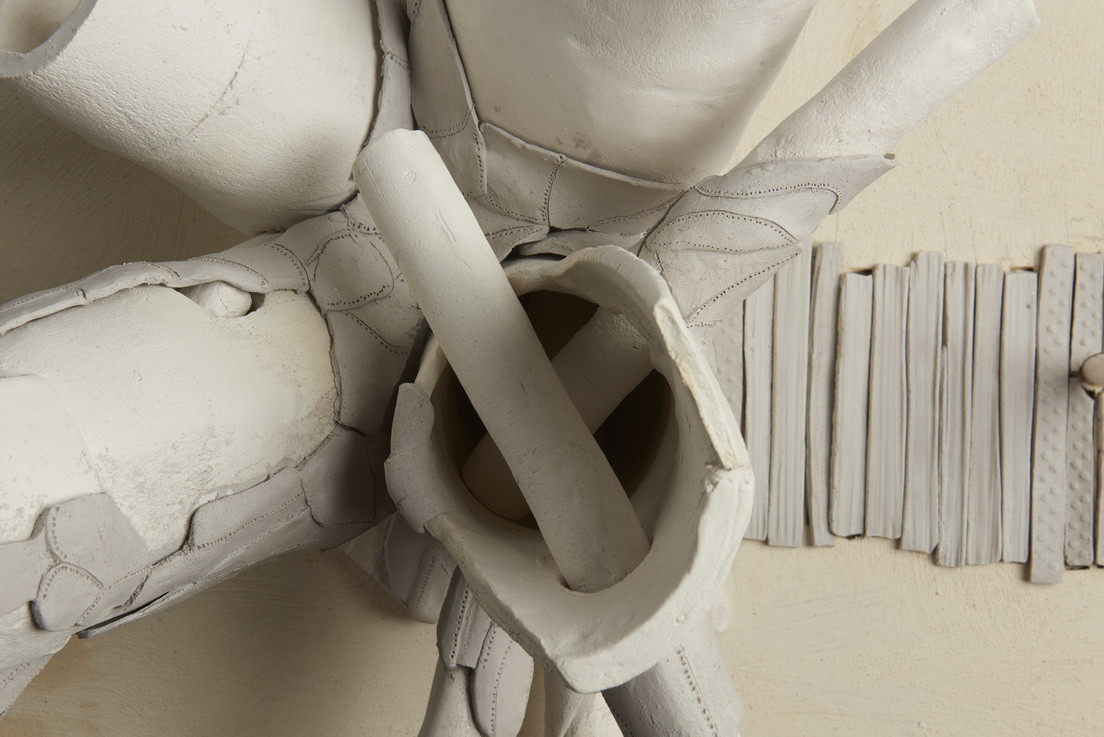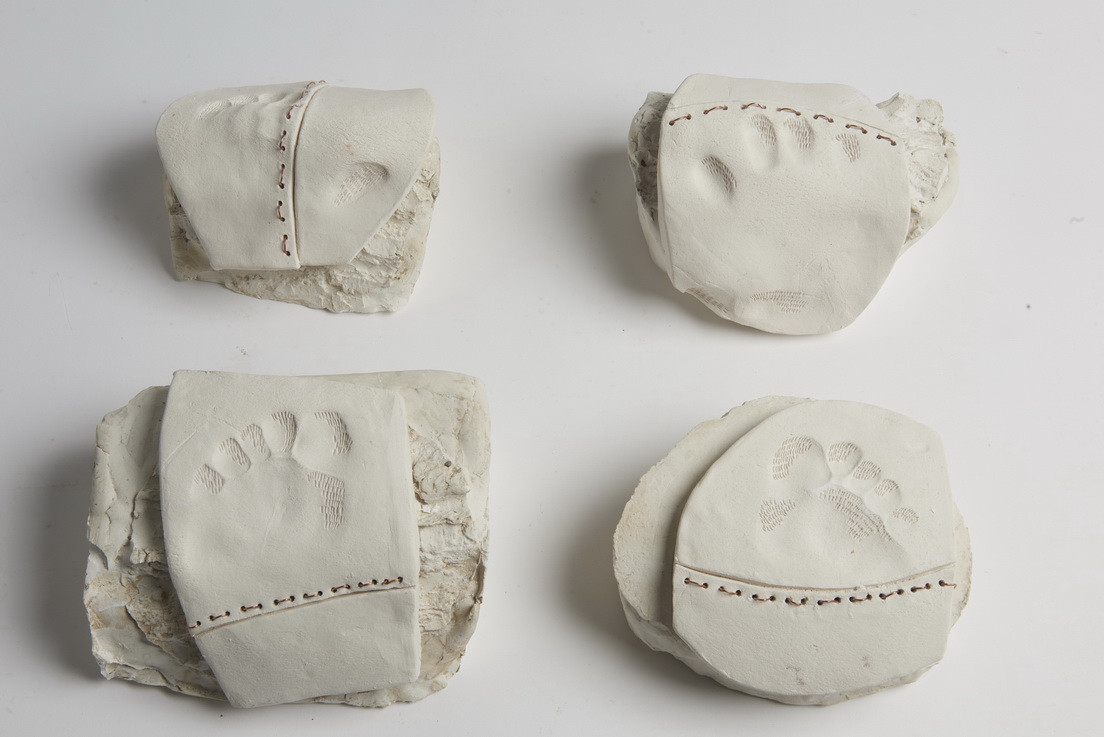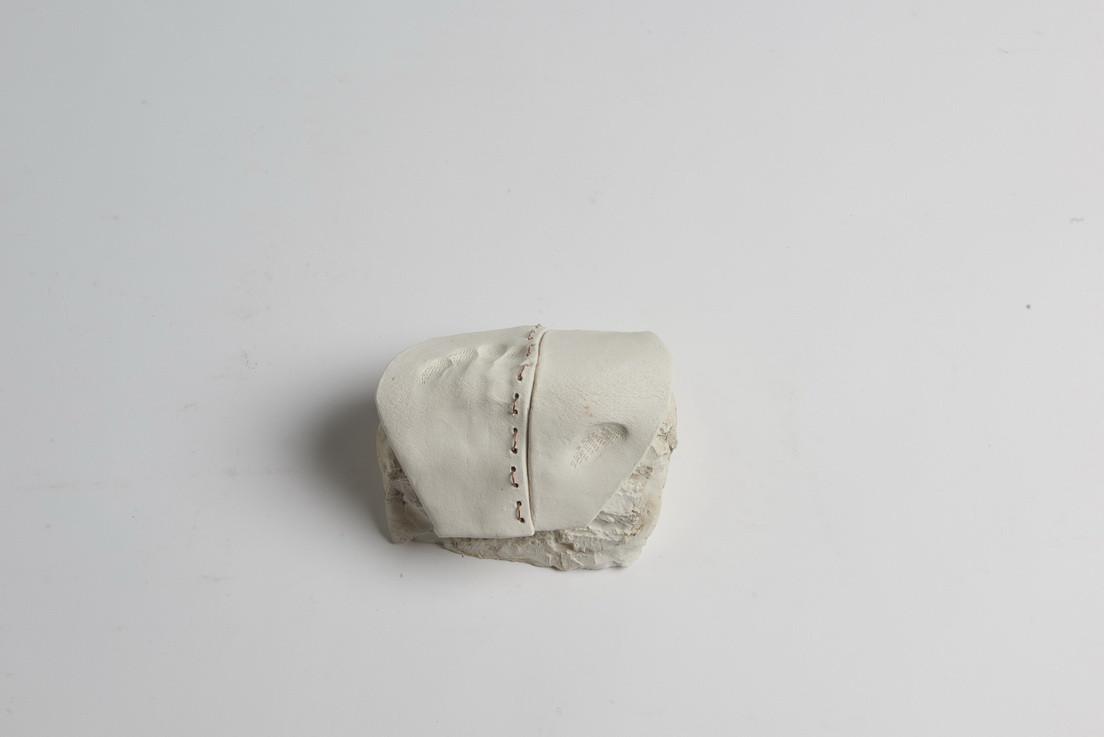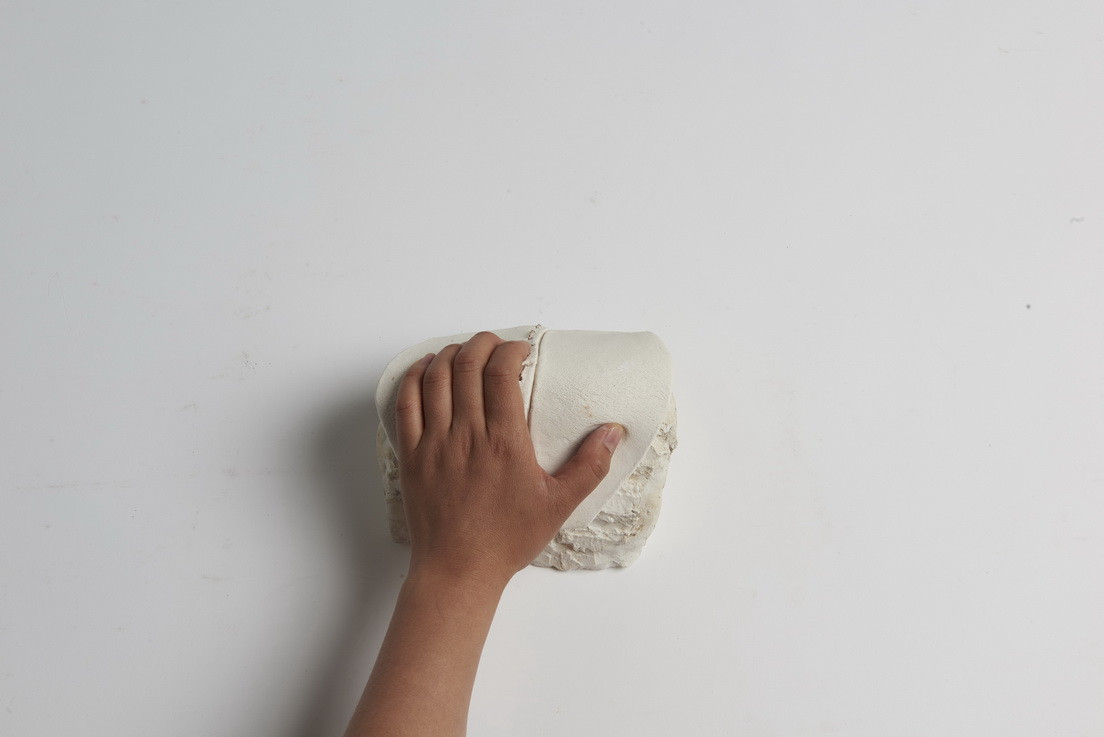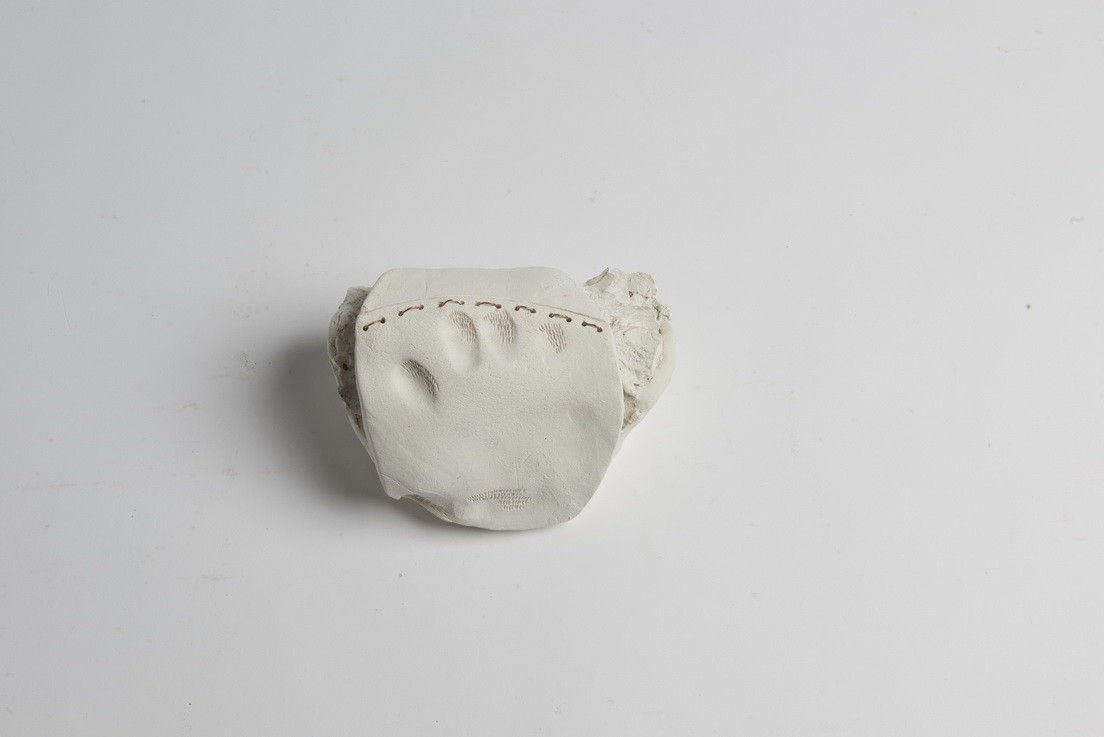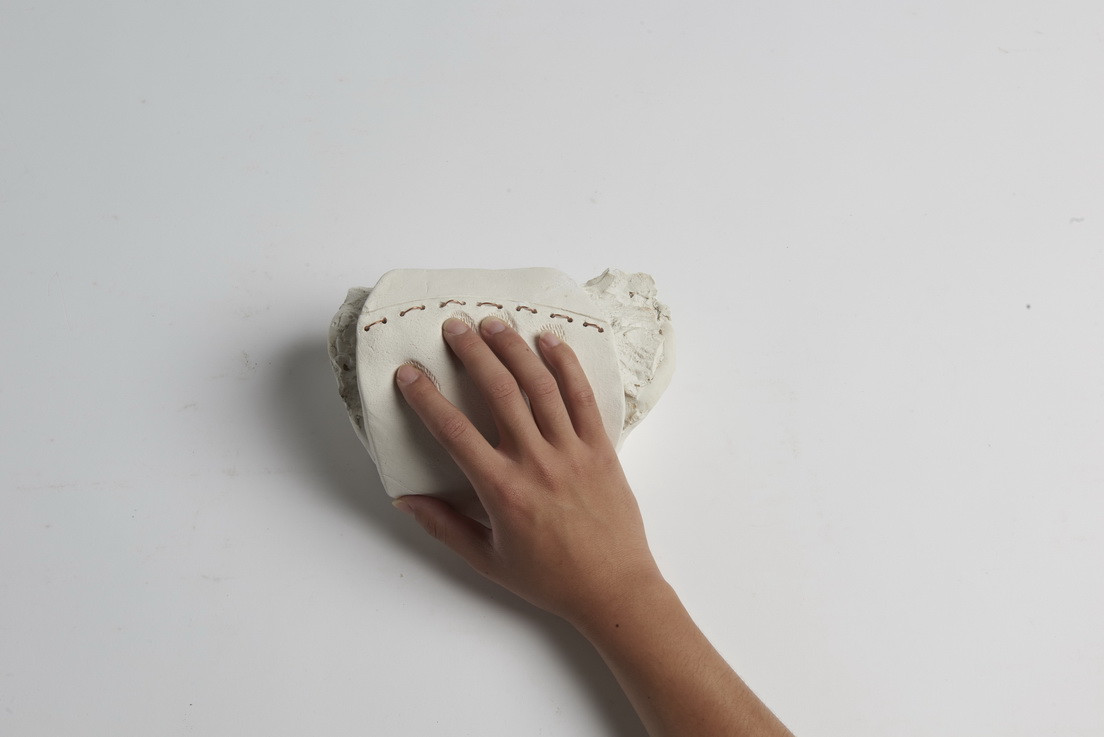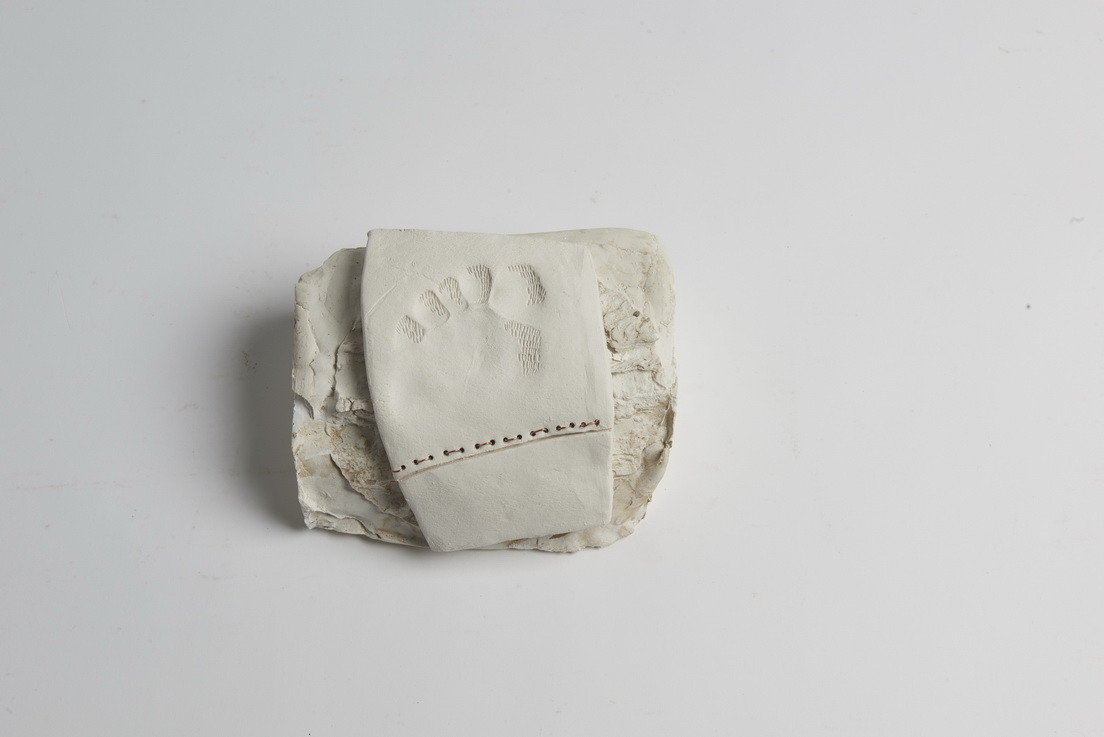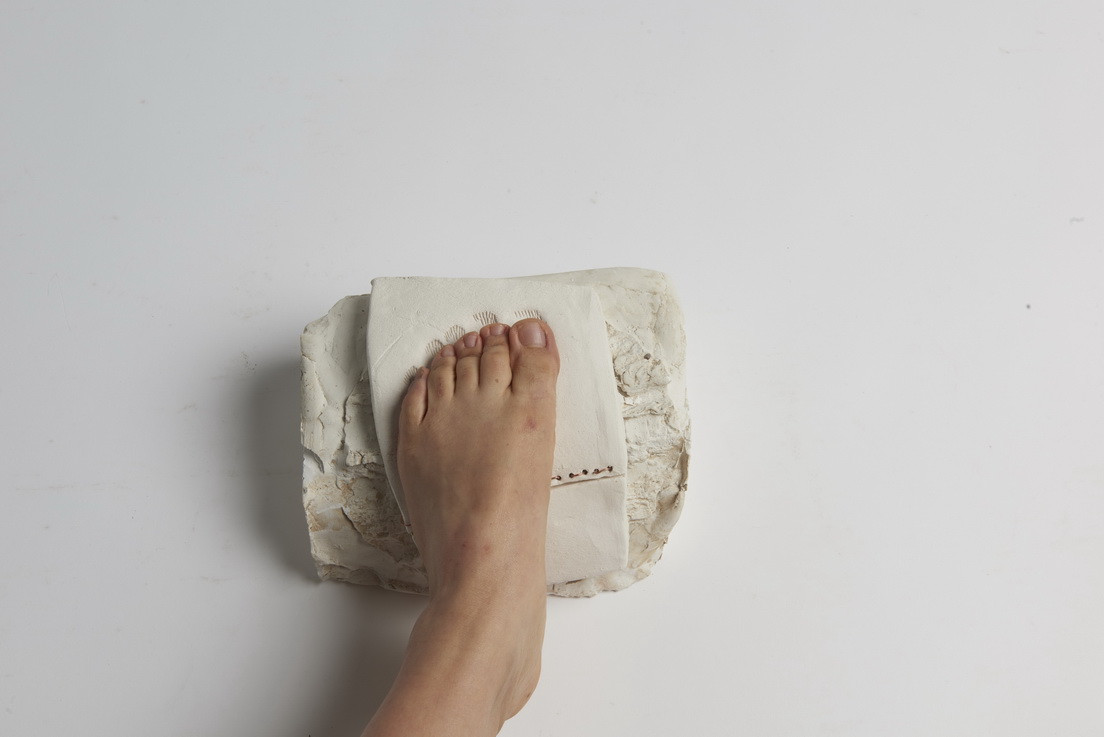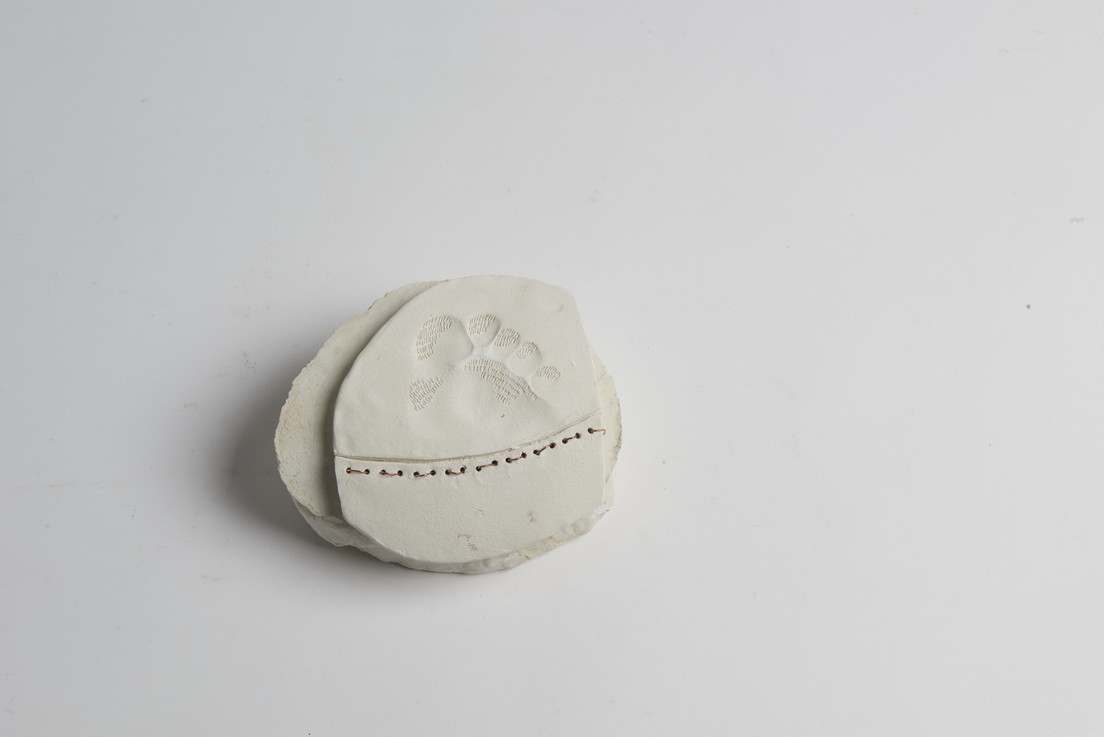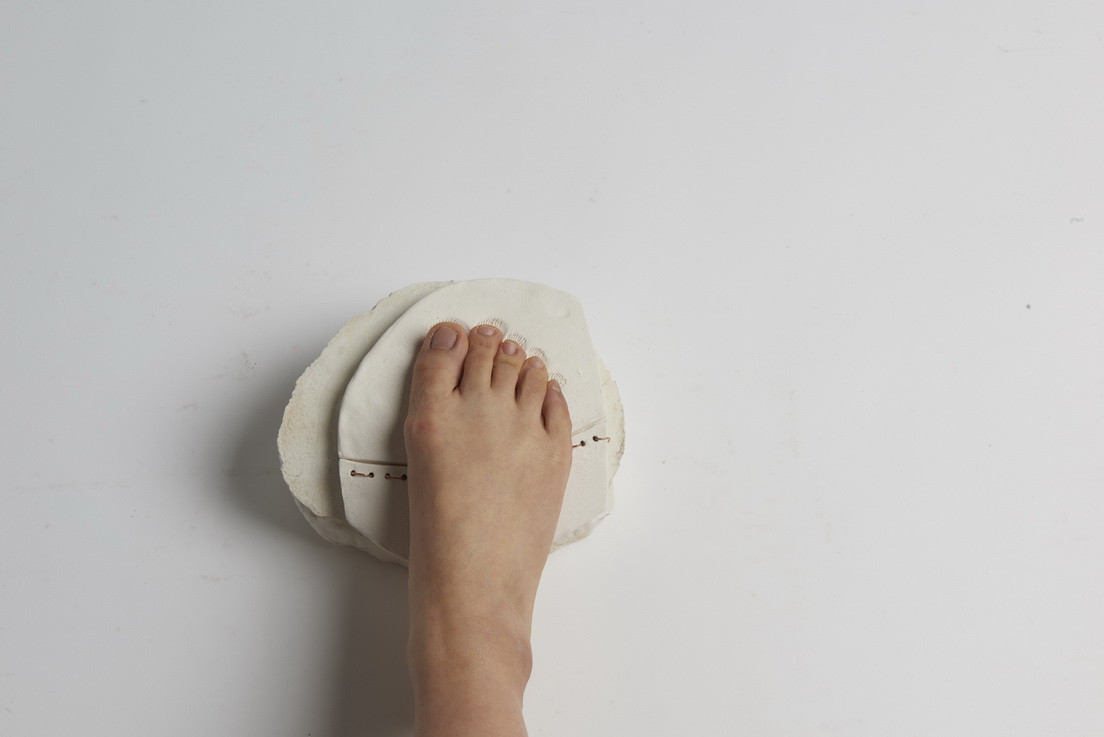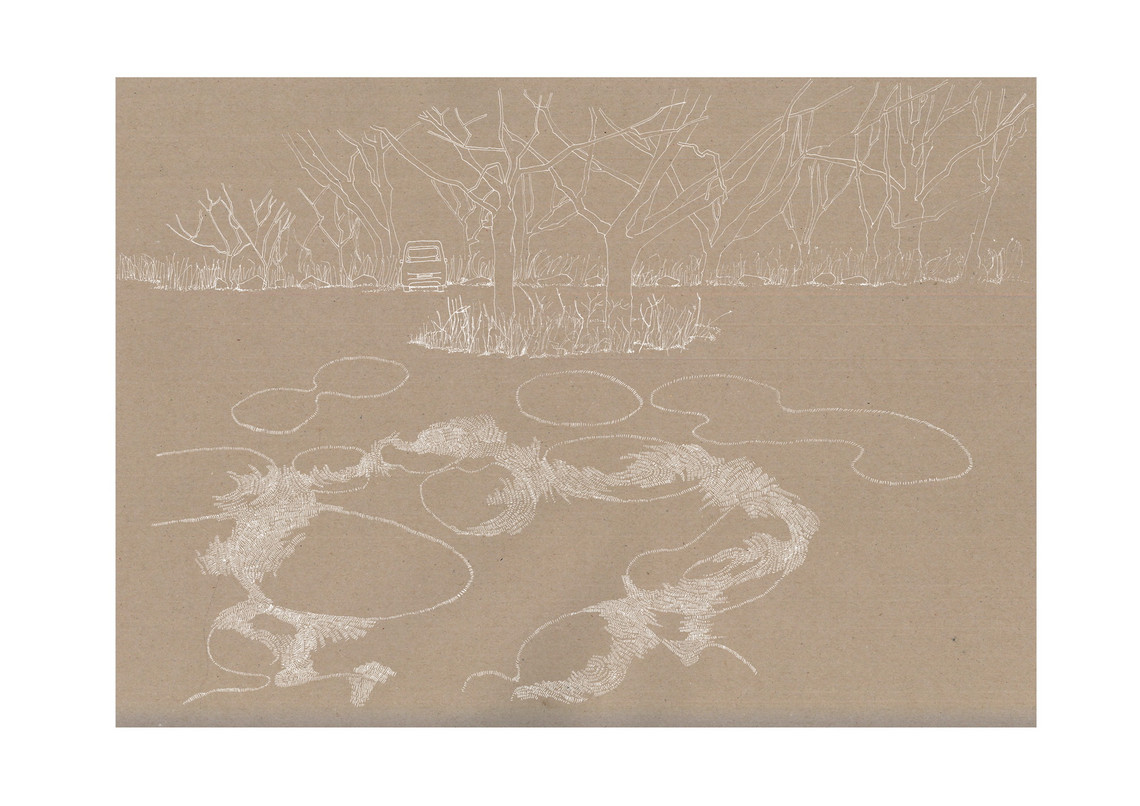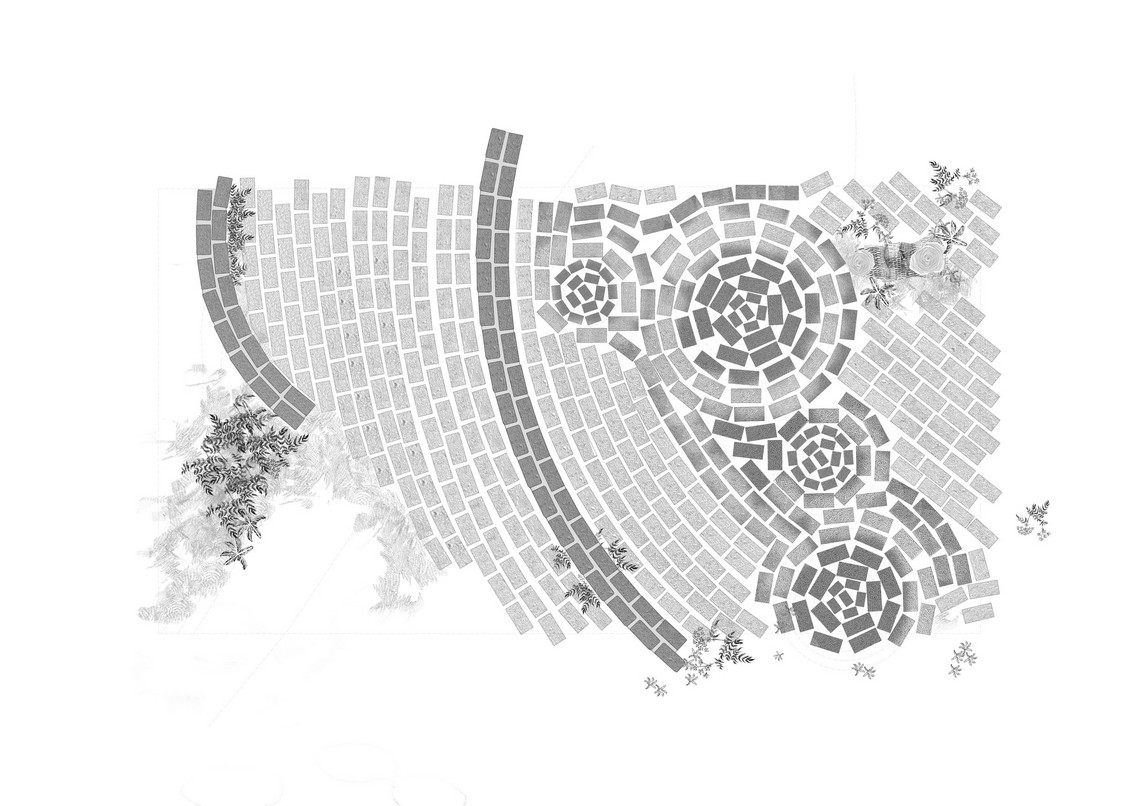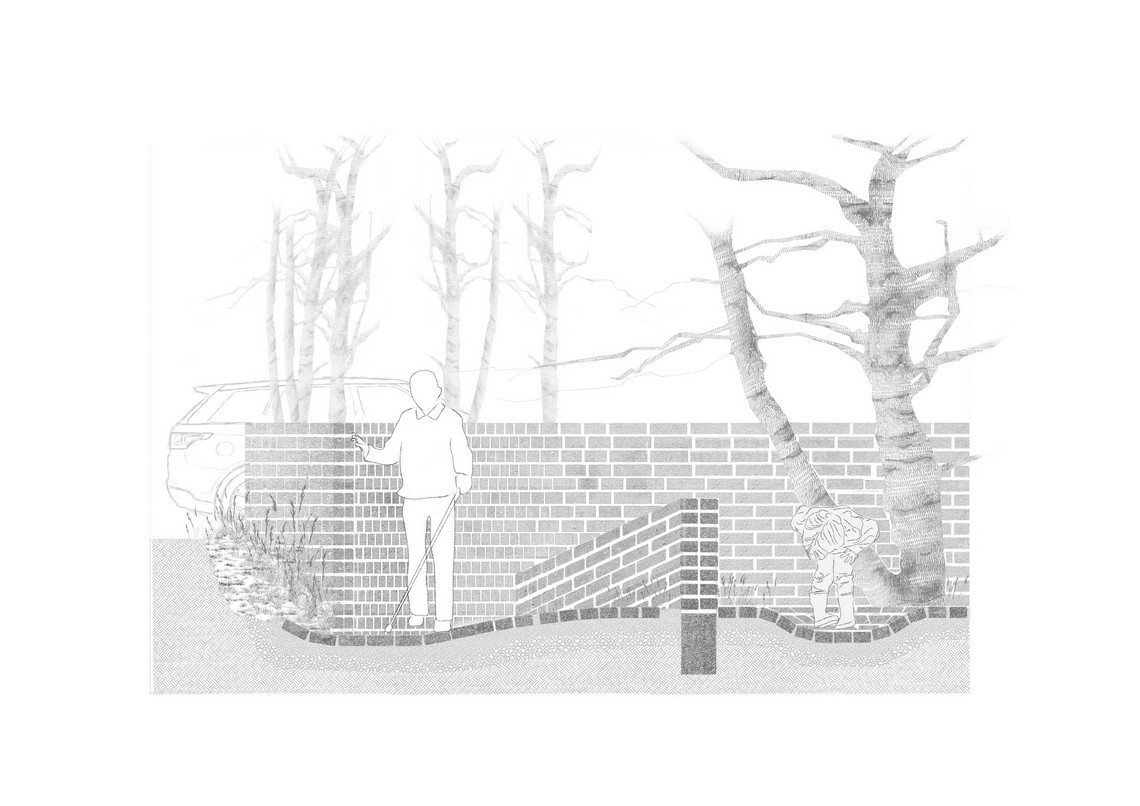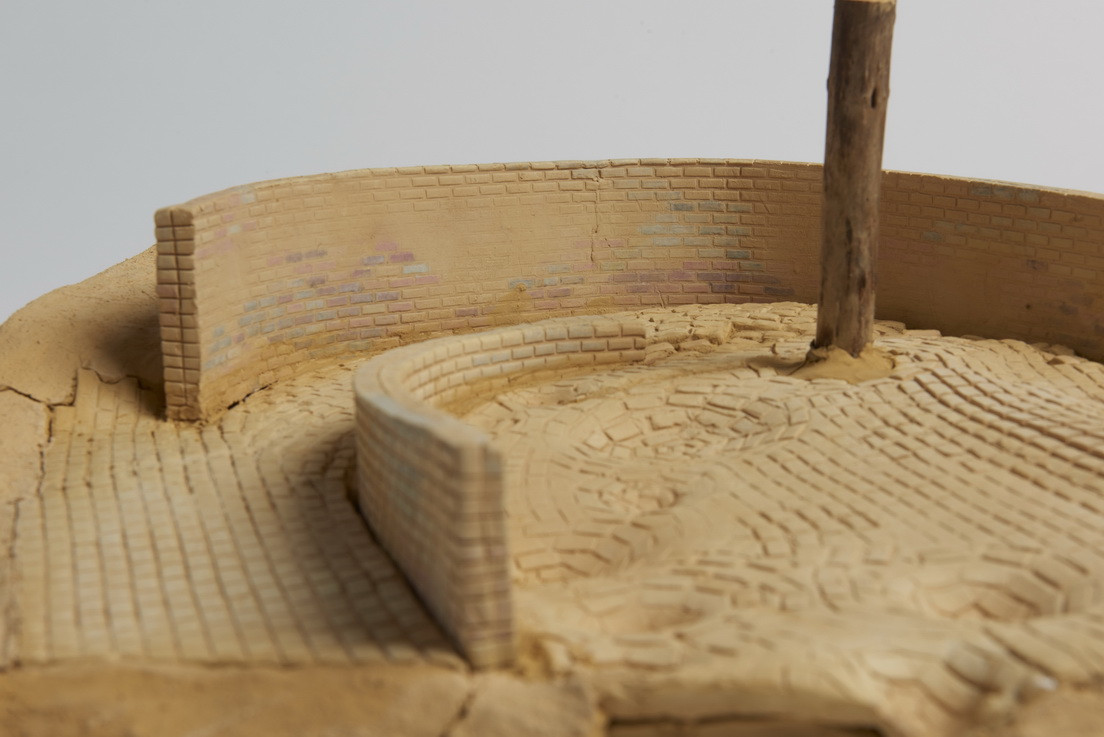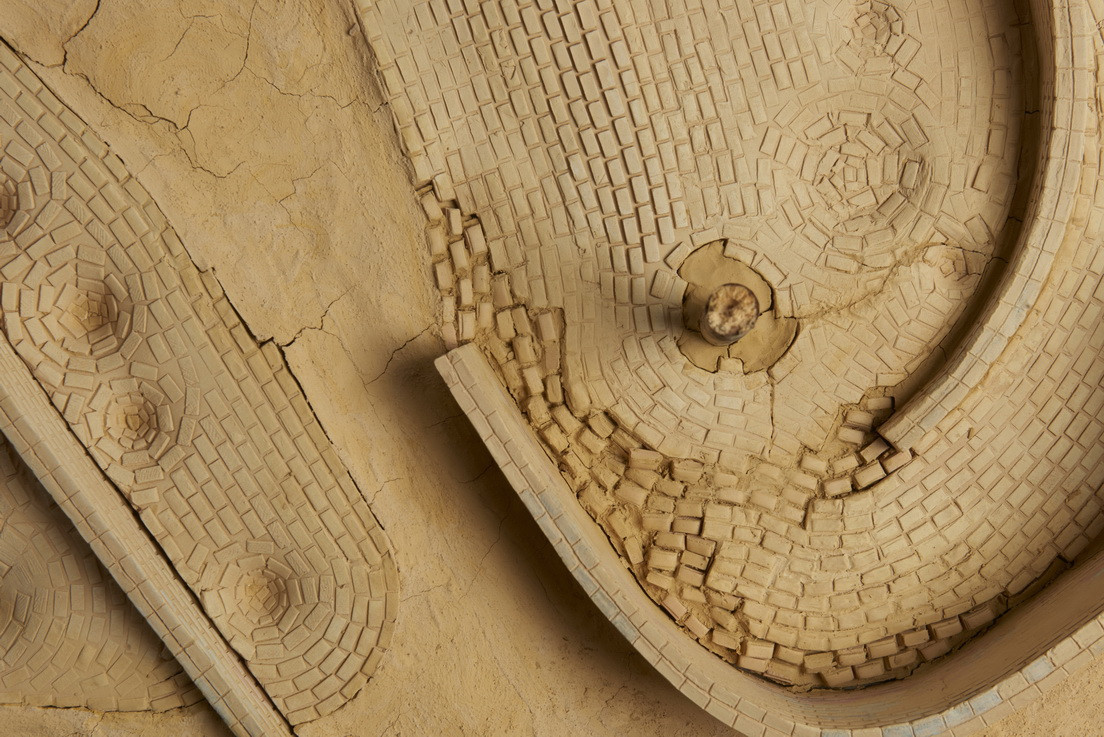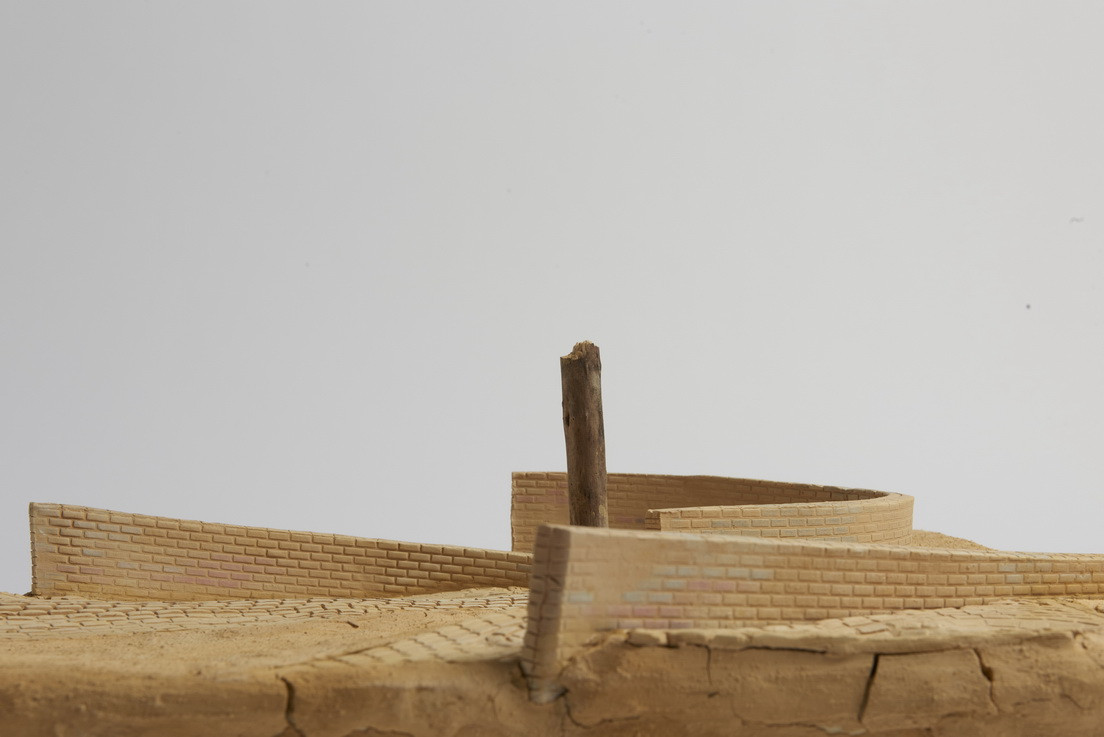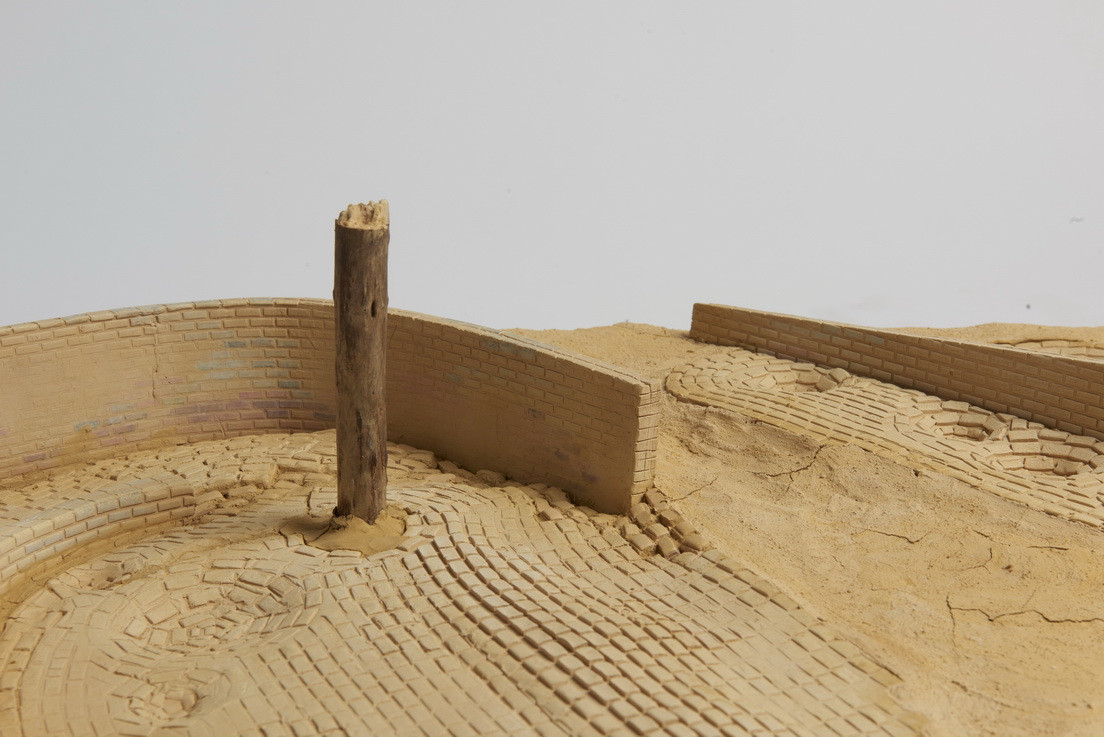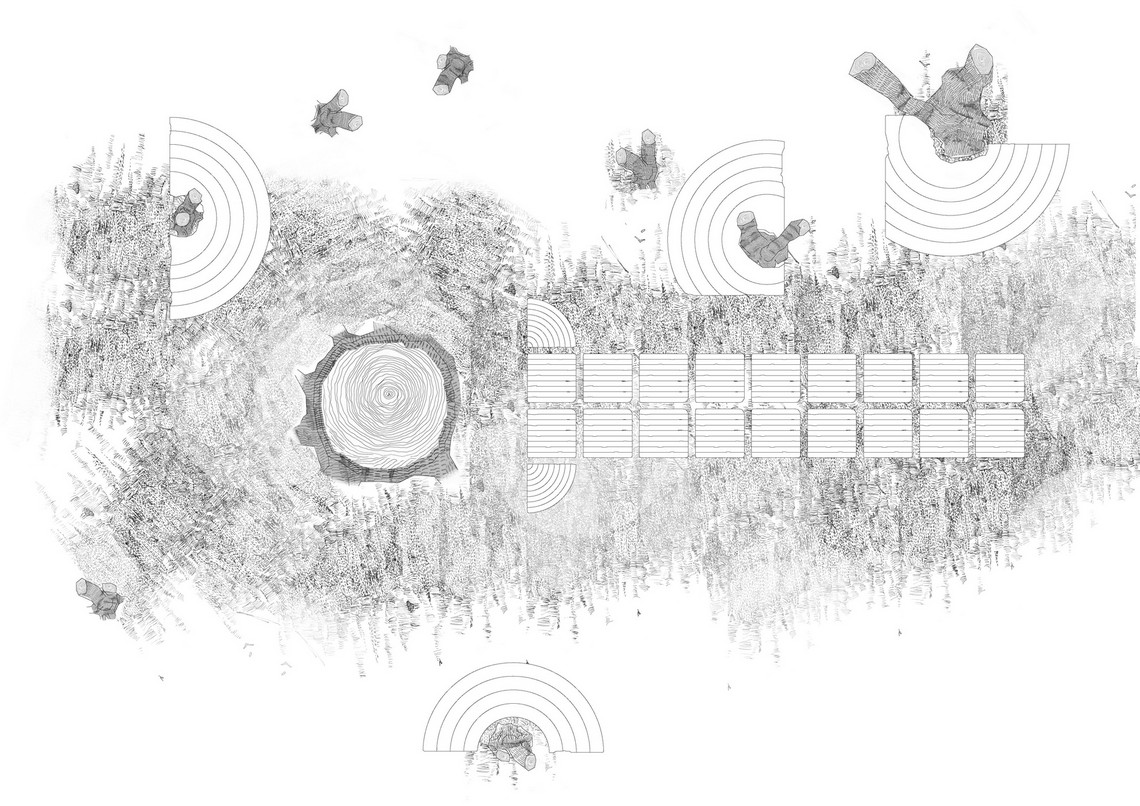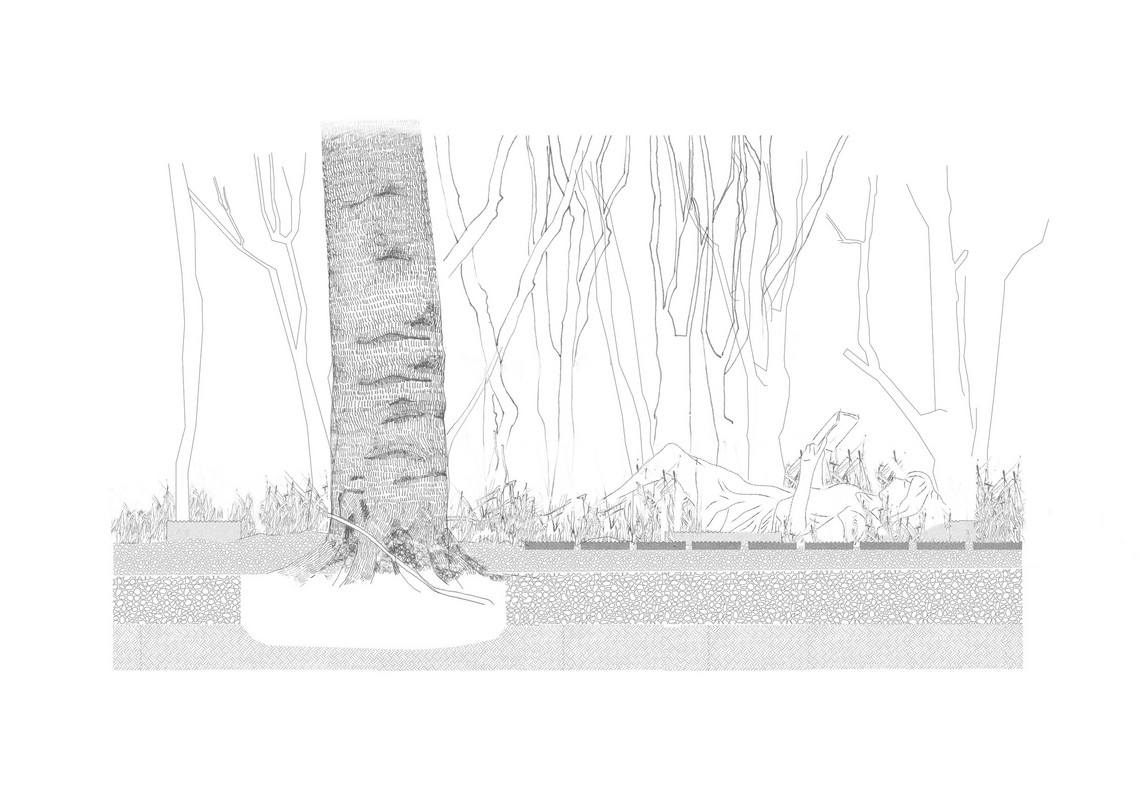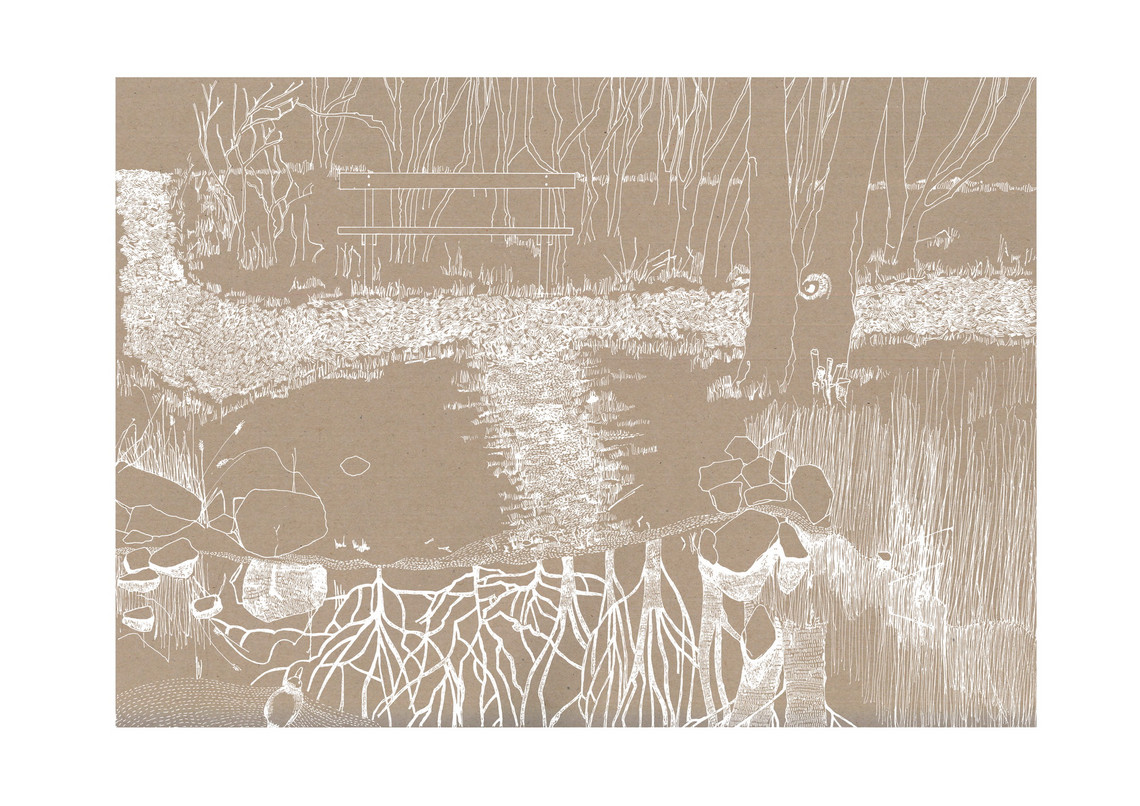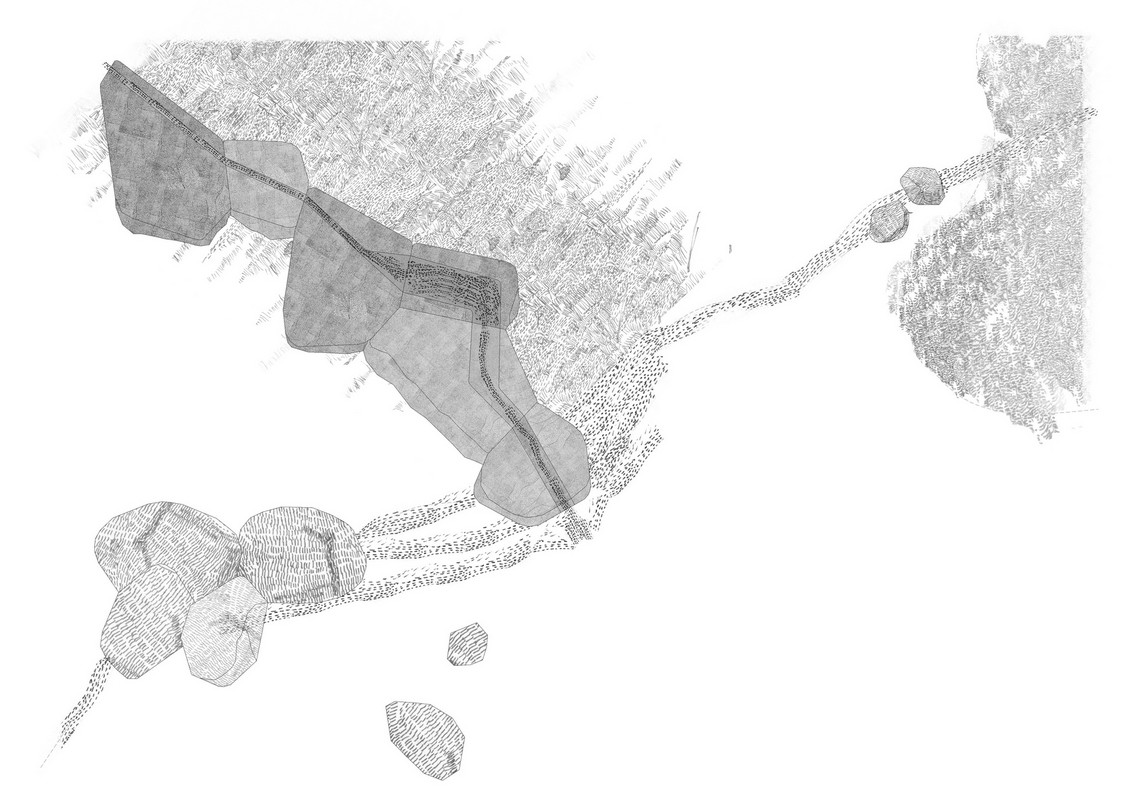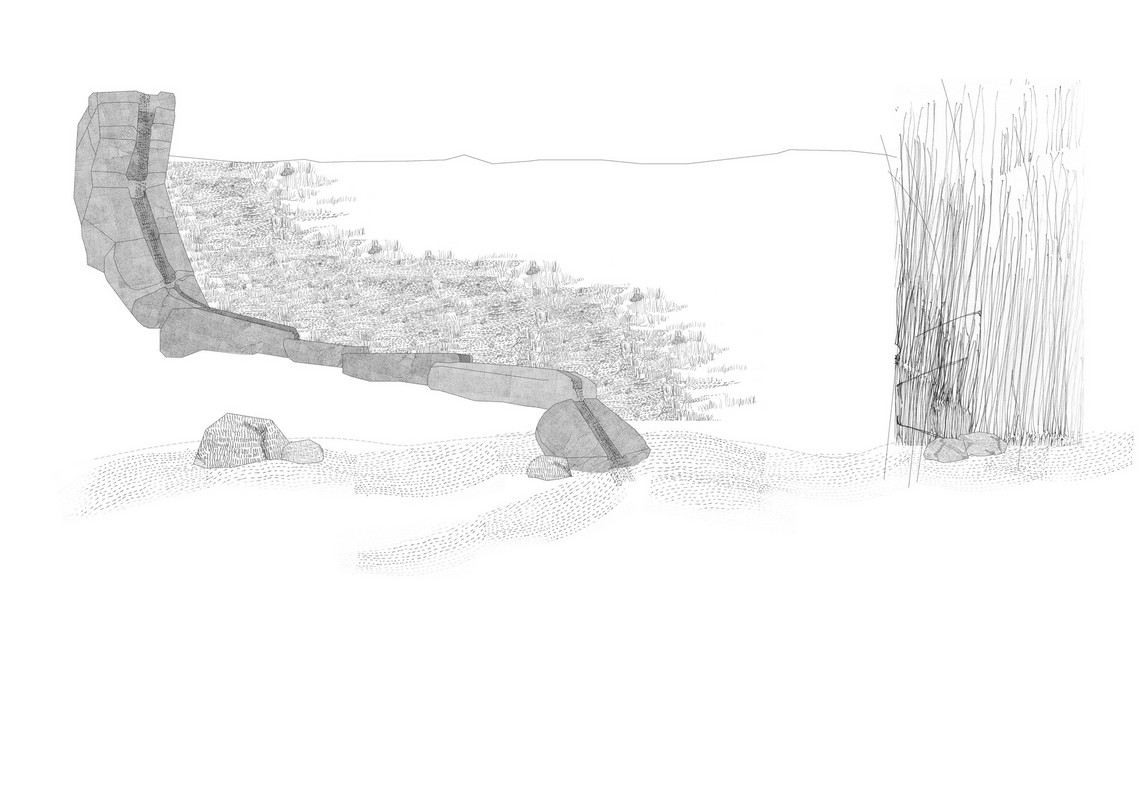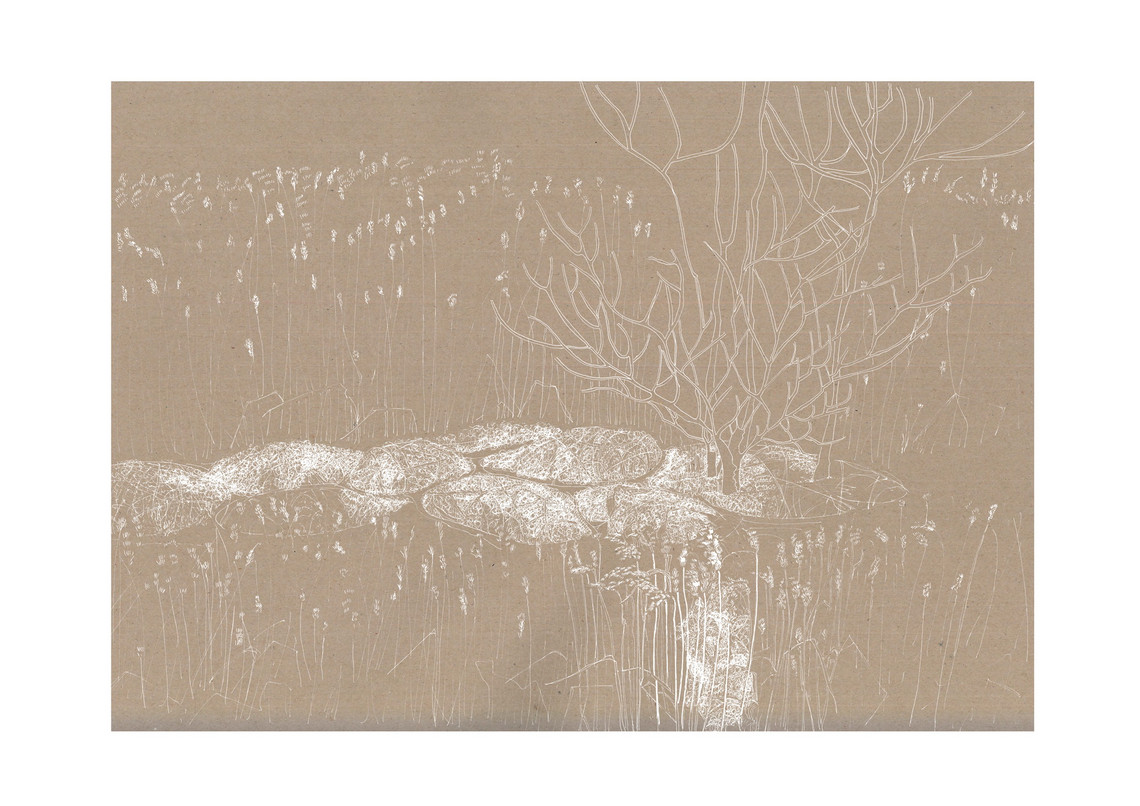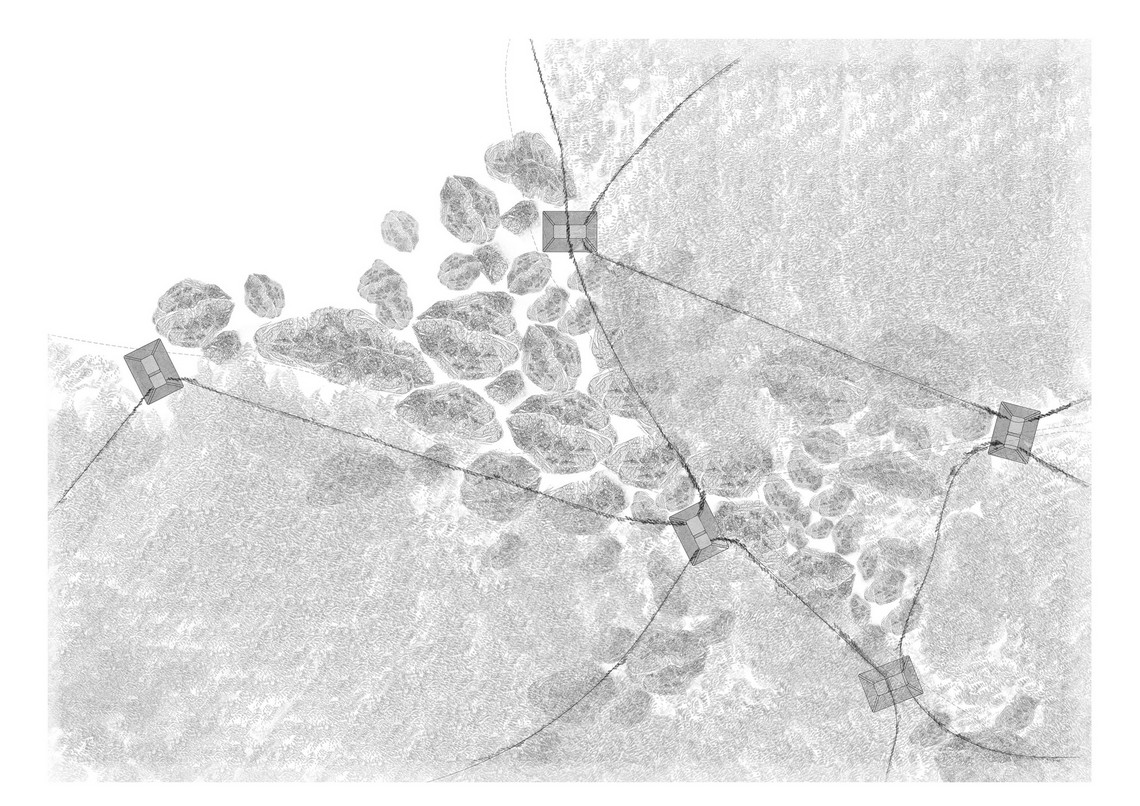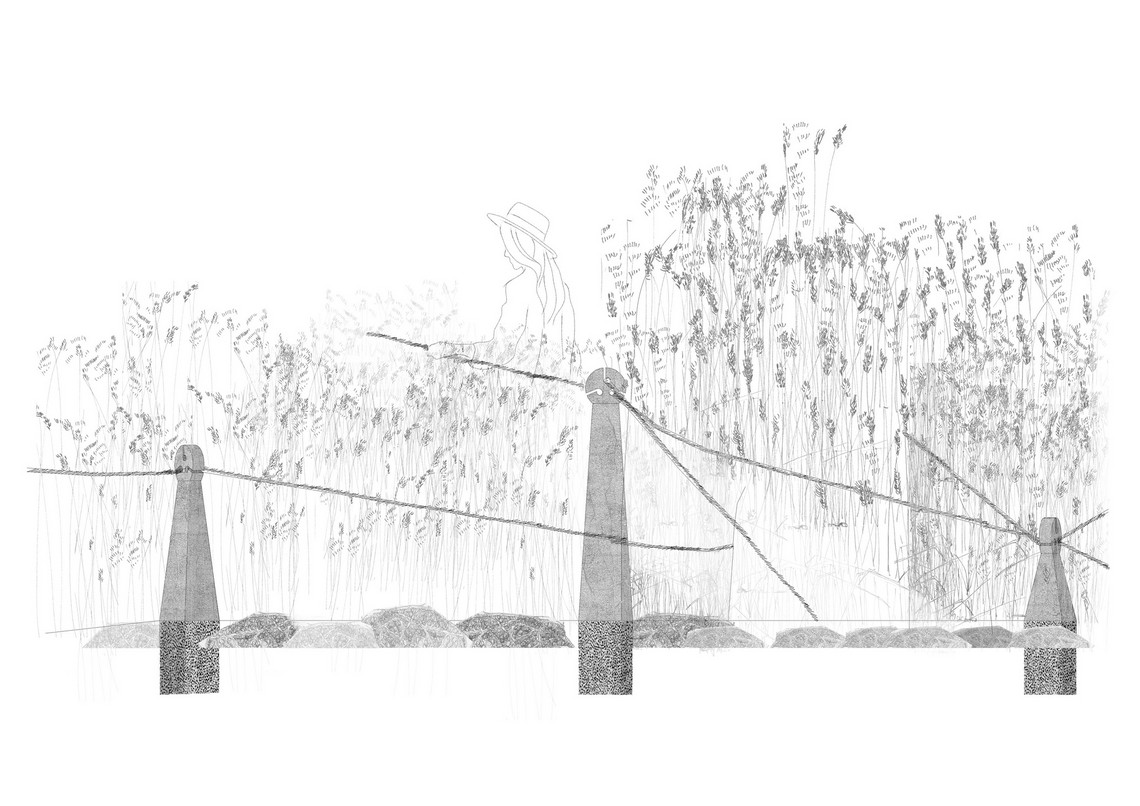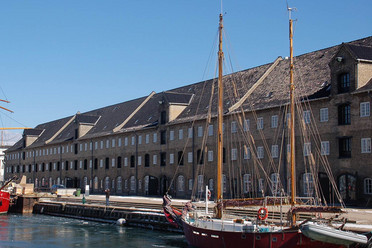
Learning from the Blind and Visually impaired: A tactile journey in Amager Fælled
[[{"fid":"71651","view_mode":"top","fields":{"format":"top","field_file_image_alt_text[und][0][value]":"","field_file_image_title_text[und][0][value]":"figure 2: The drawing that the blind informant did in the journey walking in Botanical Garden."},"type":"media","attributes":{"class":"media-element file-top"}}]]
Lykke (the blind informant)'s drawing based on her experience in Copenhagen Botanical Garden
Inspired by how the blind and visually impaired perceive nature with tactility, the project is focusing on enriching the tactile experience through unfolding the hidden beauty by five destinations and a journey in Amager Fælled. The five destinations are scattered near one of the main paths in Amager Fælled and they are “Meander through Reeds”, “Lap the Lake”, “Glade Secluded”, “Hugging Tree” and “Potholes Hopping”. Each destination intends to reveal a specific natural quality through the sense of touch defining by the study of blind-folded experiment and participant observation from the blind informant’s experience on site. The intervention for the journey situated along the path connecting each destination. Enhancing the perception of touch in nature will draw the users’ attention from solely visual perception to close-up body encounter, which will intensify the sensual experience for both sighted people and the visual impaired users by engaging their hands, skins and bodies.
The study of learning from the blind informant focuses on tactility which naturally directs me as a designer to employ the situated practice as my design method, executing the experiments regards of spatial quality and materiality on site. The situated practice embraces both the sited material experiment and body engagement. What’s more, to incorporate the insight and the reviews from the blind informant plays an important role through the design phase. Integrate the haptic perception knowledge, both from the blind and visually impaired and my self-engagement endows the project with the coherence of Inclusive Design’s discipline.
Problem Specification
My project will explore the notion of haptic experience through designing and placing “destinations” and “journeys” that tell a narrative within Amager Fælled. I hope that the tactile-inclusion journey can be informative for the inclusive perception design in terms of the urban landscape project. It could potentially inform the commune in being more aware to make their parks more inclusive for the visually impaired.
The way of working with and learning from the blind and visual impaired is an inclusive design approach, which follows the people-centered discipline. The project is more about learning from the blind people and employ the knowledge to work closely on site instead of detaching myself as a designer from the user and the context. The method of progressing the design encourages me to discover my own way of design which is situatedness and people-centered, empathy, in a way benefits myself in constructing my future path being a responsible designer for the society.
Framing of the project
Focus: Landscape intervention, with a focus on haptic experience by learning from how the blind and visual impaired perceive the nature spatial quality and executing the situatedness practice on materiality and spatiality.
Goal: to develop a haptic inclusive journey in nature and practice the sited engagement design process.
Introduction and Motivation
Touch-inclusive experience and learning from the blind and visually impaired
This project is inspired by the notion of the sighted being able to learn from the blind, stemming from my research in the written assignment (see the attachment below) that discusses touch-inclusive spatial experiences of the blind and visually impaired in Copenhagen Botanical Garden. I studied the way in which the blind experience the Botanical Gardens through the sense of touch. The study into tactile experience in the Botanical Garden of the informant who is blind was constructively inspiring. The informative discussion includes the different haptic experiences of outdoor and indoor, how the potential to change the touch from passively to positively, say the continuous railing attached by different plants was the agency to invite the blind informant to explore the space on their own pace(figure 1), and the potential further studies for the multimodality senses since the perception of human beings is modality.
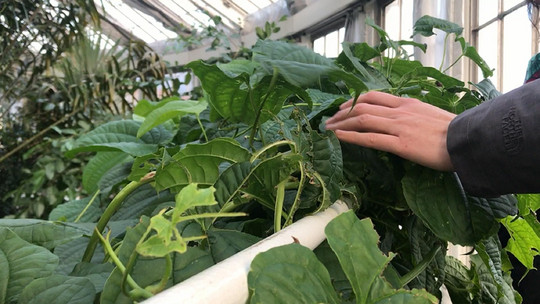
Haptic journey in Amager Fælled
After investigating touch-inclusivity in the Botanical Gardens, where both outdoor and indoor spatial experience is included, there is a lot of underestimating haptic perception in space apart from vision would be able to value the spatial experience for both sighted and blind individuals. (figure 2) I intend to employ the knowledge, learned from the blind and visually impaired, to design a haptic journey in nature.
Amager Fælled plays a role as a recreation public natural park in Copenhagen, possesses an obvious image of idyll and a hidden series of rich historical stories. It has great potential to implement a haptic inclusive journey to enhance the natural sensation and unveil the historical narratives of the site.
Through the project, I would like to bridge a mix of sensation based on learning how the blind and visually impaired experience the specific site in Amager Fælled.
Written Assignment: The Touch-Inclusive Spatial Experience of the Blind and the Visually Impaired in Copenhagen Botanical Garden
Destinations and journeys with history and natrual narratives in Amager Fælled
Thomas Dambo's Six Forgotten Giants give the “explorers” in Copenhagen chances to experience the playfulness of hide-and-seek by finding the secretly hiding wooden sculptures in nature.
Inspired by the Six Forgotten Giants, the intervention in Amager Fælled is to create a journey that people will experience with their own bodies and be integrated with their movement. The journey would be about finding these hidden ‘secrets’ instead of telling visitors what they should look at. Therefore the interventions will gently invite visitors to explore nature by tactility.
Working method
The diagram(figure 4) illustrates my framework of the design methodology, which is the relationship between the main focus- haptic experience and how it relates to the other three subjects. These three subjects are me(as a designer), Lykke (the blind informant) and Amager Fælled(the context). The findings from the encounters of every two of the subjects will be reflecting on how I develop my design.

I was in collaboration with Gabrielle Sanchez from MAA Graphic Communication Design in KADK in the research phase
Research: Blindfolded walking experience
Research: Blind-folded Walking Experience in Amager Fælled
Research: Walking with Lykke in Amager Fælled
Research: Walking with Lykke in Amagerfælled
Research: Historical stories archiving
Research: Historical Stories reseach
The working hand/ Situated practice
There’s no surprise that the similarity between an artist or designers and their own work underlines the interaction of the creators’ sense of self and their work. (Pallasmaa, 1988, p.52) As a designer, I enjoy working also as a craftsman, working with my hands. “The fact that being an apprentice at the construction site used to be a mandatory part of architecture at the construction site used to be a mandatory part of architectural education, and that architects often practiced a craft, drawing, painting or sculpture as a hobby or a means of acquiring manual skill and carrying out formal experiments, reinforce the connection between professional architectural practice and the realities of making- between idea and matter, form and its execution.”(Pallasmaa, 1988, p.65)
In the design process, I have been working through self-engaging in “touching” the site and closely encountering different materials. I invited one of my colleagues to have the blind-folded walk (figure 21)in the site while I was the observer, later I also did the blindfolded experiment by myself. I also use my own body to testify the scale, surfaces’ perception, spatial quality on site. (figure 22) In relation to the material study and developing the design proposal, I have been coming back and forth to the site, to test the material on site. (figure 23)
Process and Method
The five destinations will be determined by the self-engagement research, the blindfolded experience and the observation from a walk with the blind informant. The materiality is developed by the sited one-to-one scale tests, trials of the material experiment, and the reviews from the blind informant. Two of the destinations “Hugging Tree” and “Potholes Hopping” will be more developed than the other three, with in-depth materiality trail process, one to one scale physical material presentation while the other three destinations “Meander through Reeds”, “Lap the Lake” “Glade Secluded” and the journey along the path will be presented mainly visually and smaller scale of reflection on the materials. (figure 24) (figure 25)
Hugging Tree
Most of the crooked big trees are scattered in the open meadow area, which makes them being outstanding from far. When I accessed one of them, the branches framed an empty space which gave me the sense that I was inside a private room.
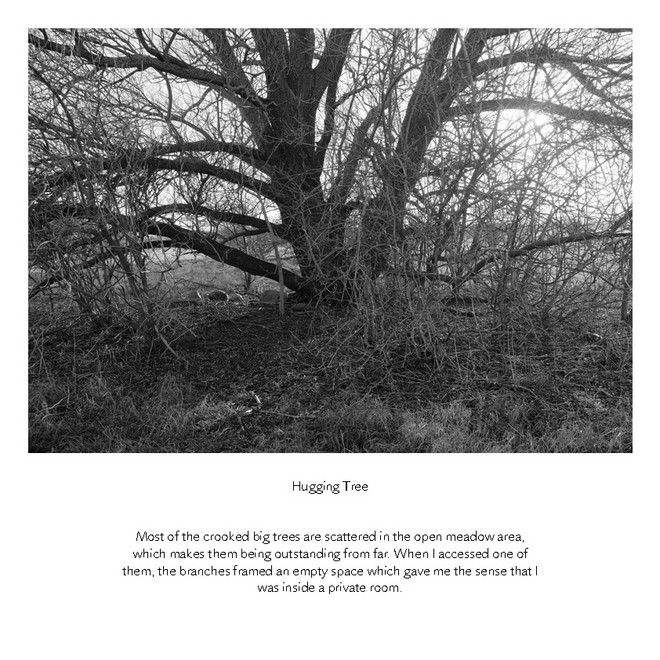
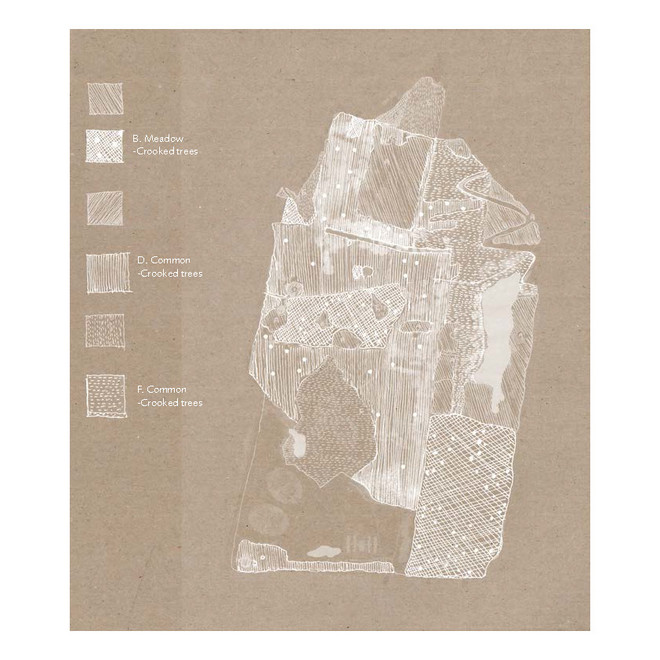

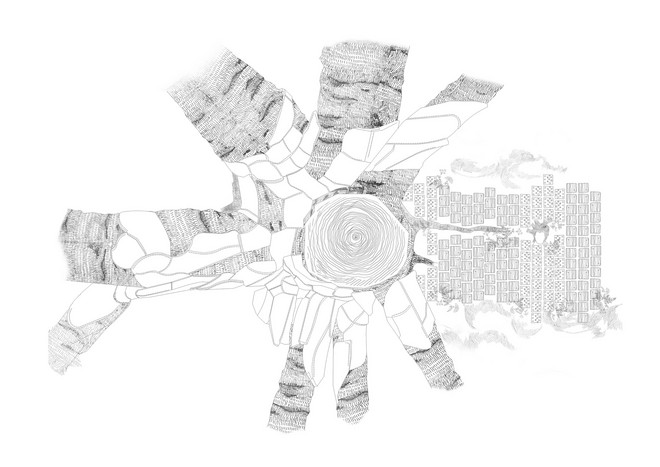
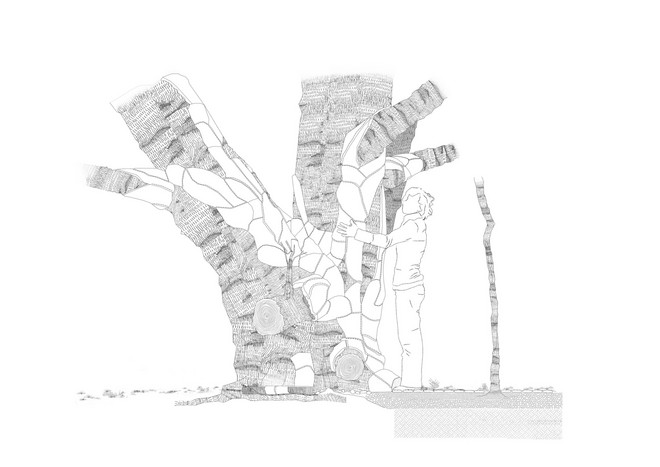
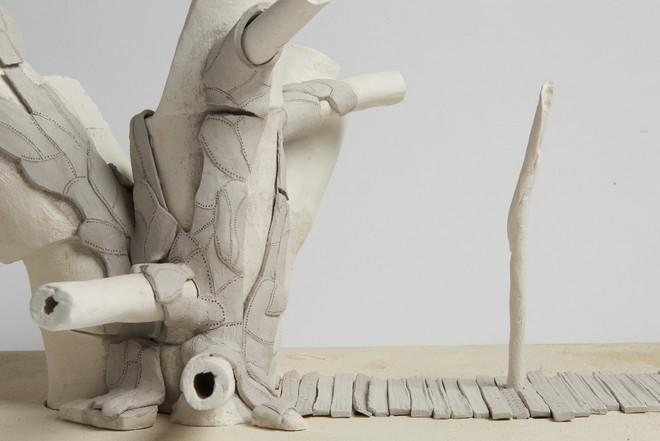
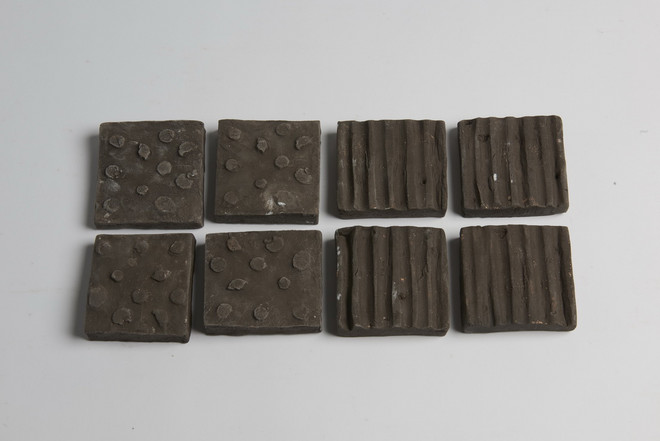
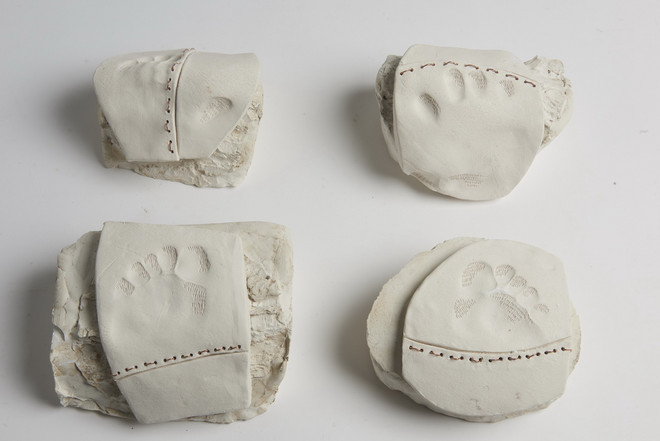
Potholes Hopping
The two parking lots which situated to the west of Amager Fælled, near the access to the Artillerivej, having a lot of potholes generated gradually by the coming and going vehicles. It creates an interesting and playful vibe. To some extent, all the ups and downs can contribute to the pleasure of walking.

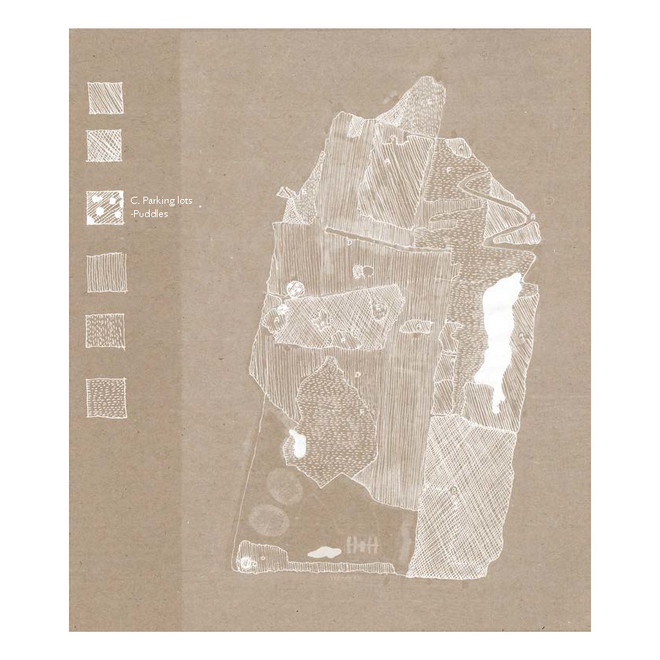
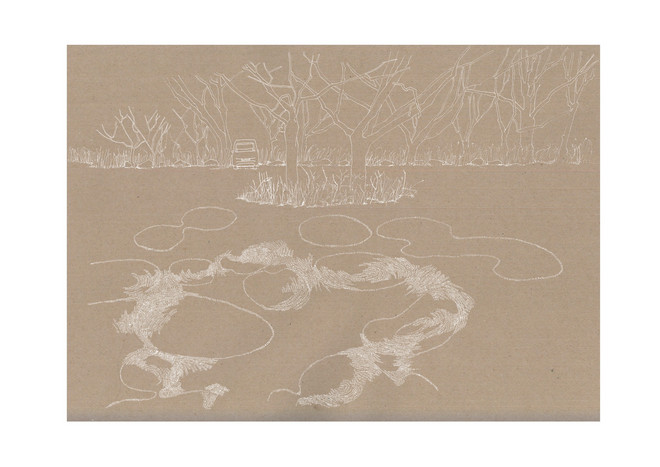
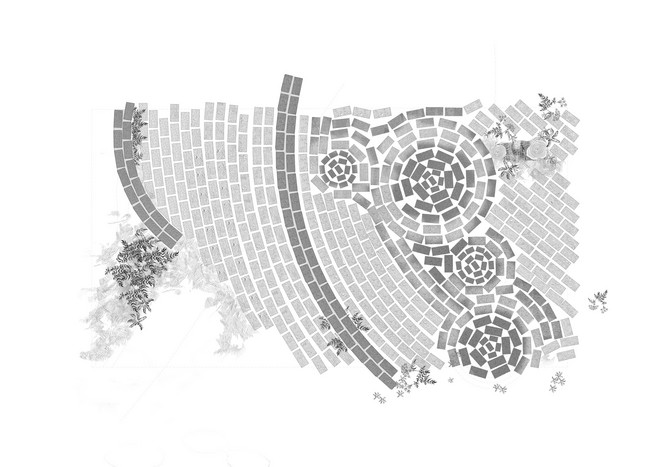
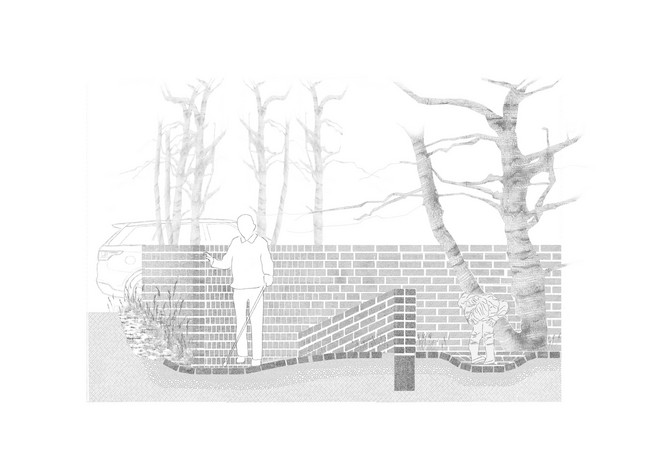
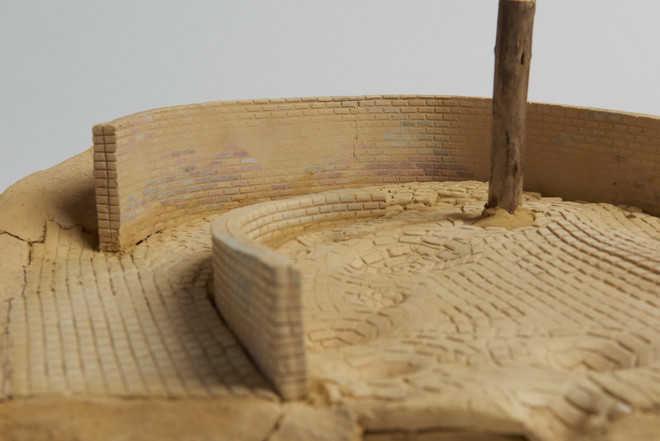
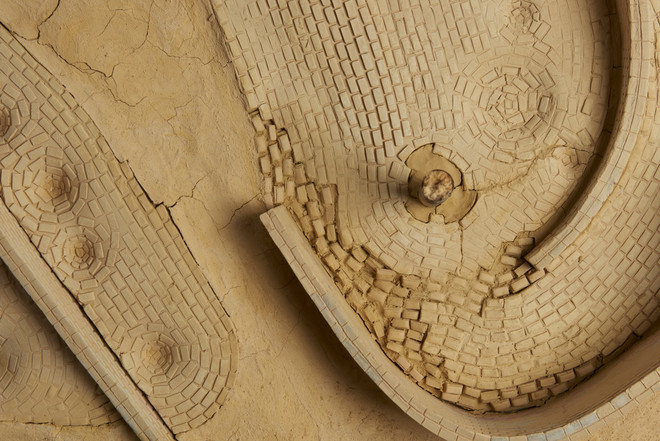
Glade Secluded
By entering the path suddenly excluded yourself from the main road, the path directing inside the forest is very narrow, soft. I couldn’t foresee what I was going to reach, confusing by a group of intricated branches. Walking for a while, a glade appeared with a respectively bigger tree standing in the middle. The enclosed covering of the trees created a moment of secluding when I entered the glade, weakening the sound from the road, the cycles, the traffic, the city, a moment that I was isolated as a recluse.
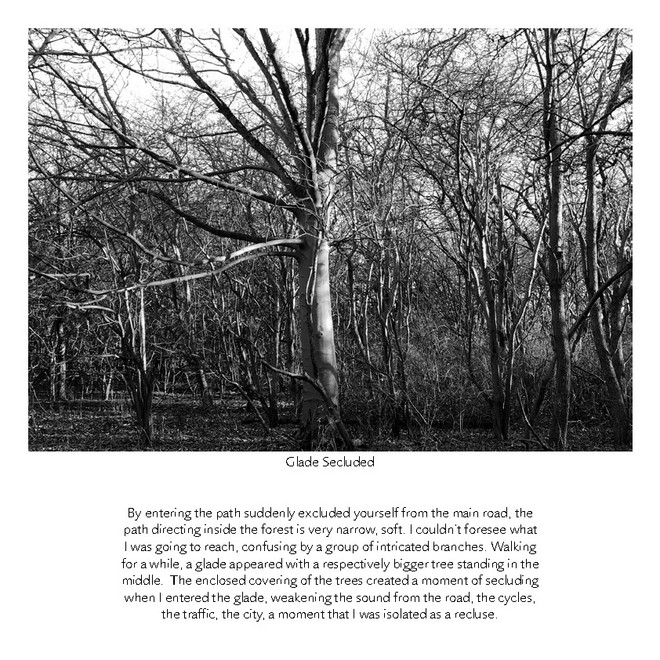
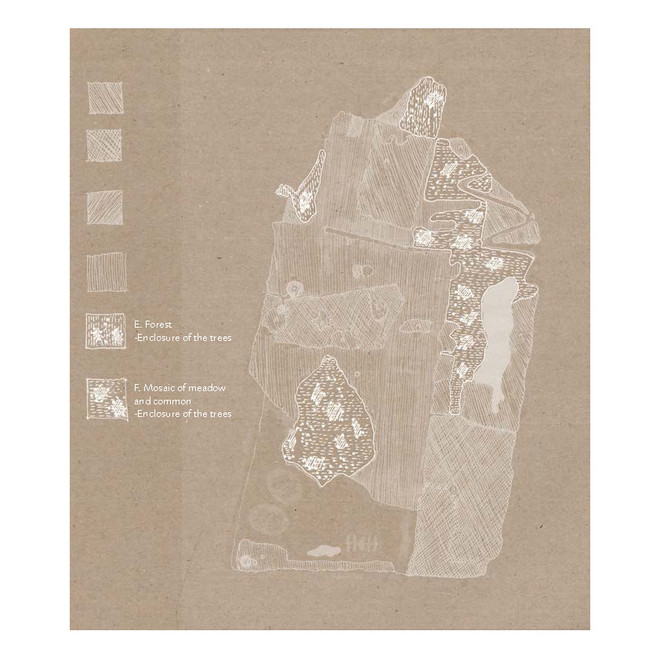
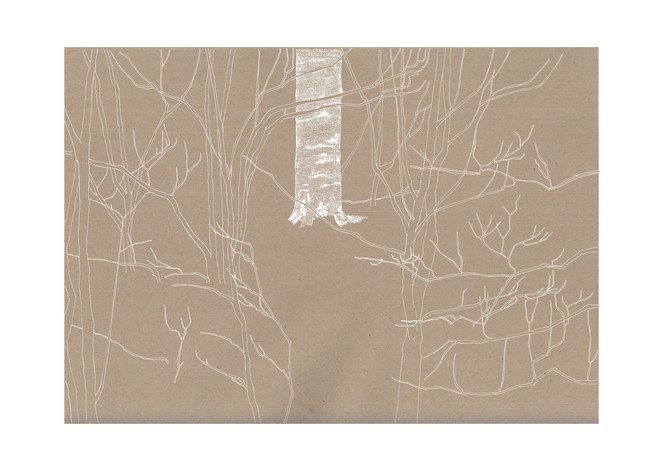

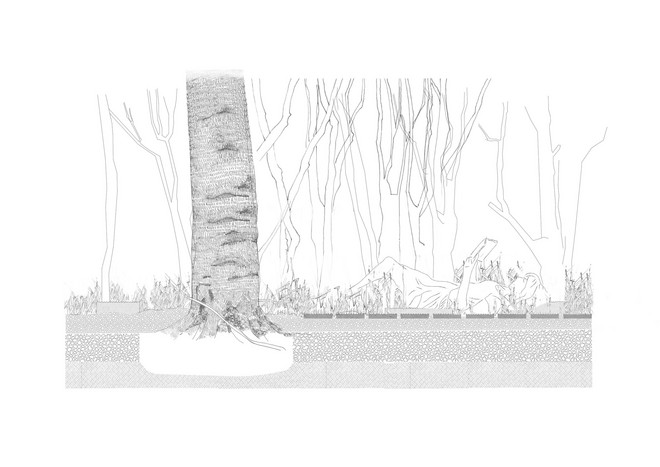
Lap the Lake
The first time that I walked towards to the lake , I was amazed by the small track that covered with the bark mulch which make the sensation that I walked on become so much different than walking on some other surfaces. The sensation of stepping on this track is more quiet and woodsy, especially after it soaks in the rains. I also make a 1:1 plaster casting of the surface along this track, it leads the visitor to the tranquil lakefront .
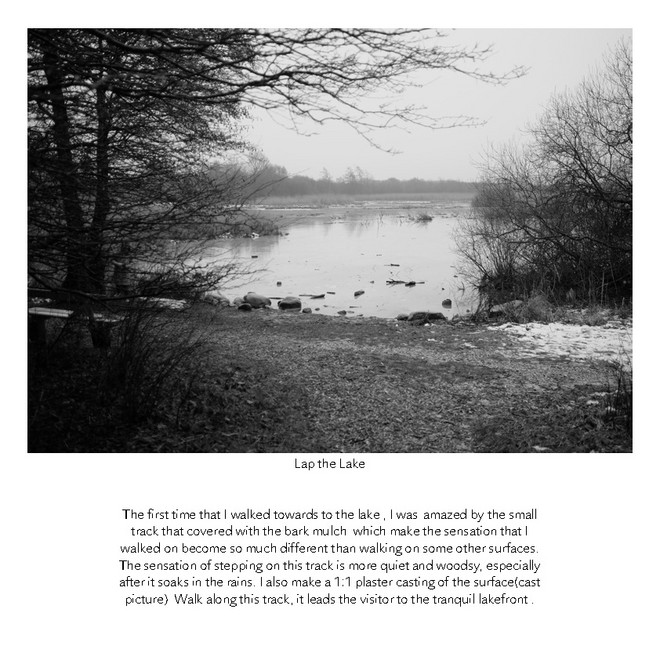
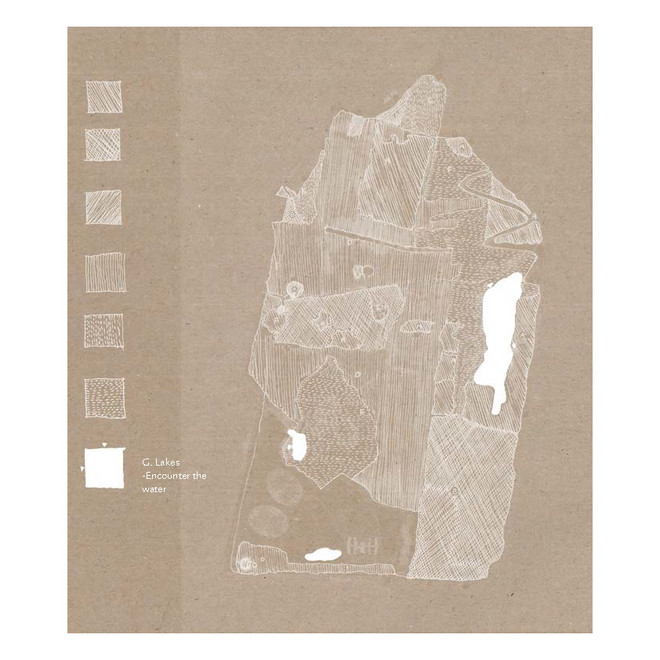

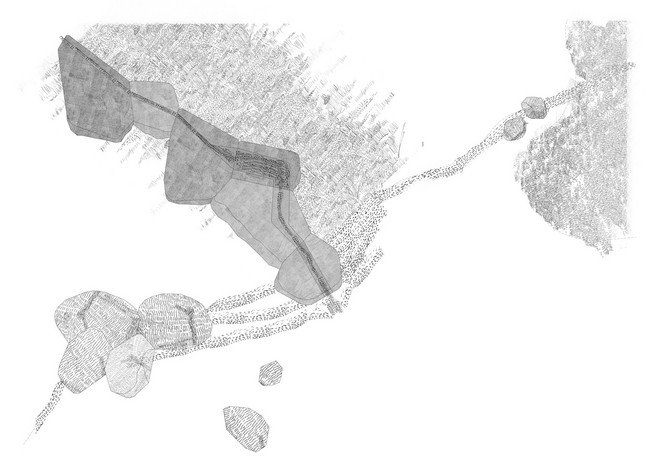
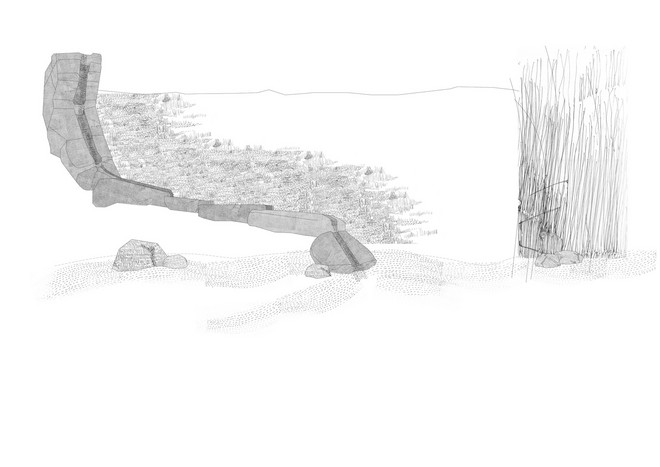
Meander through Reeds
The contrast of the short ones which had been trimmed down and the intact ones showed the traces after the routine maintenance. The trimmed ones become as a welcoming carpet that inviting people to step on it, while the taller ones become a solid volume. I was intrigued by how dynamic nature can be by the participation of human interference.
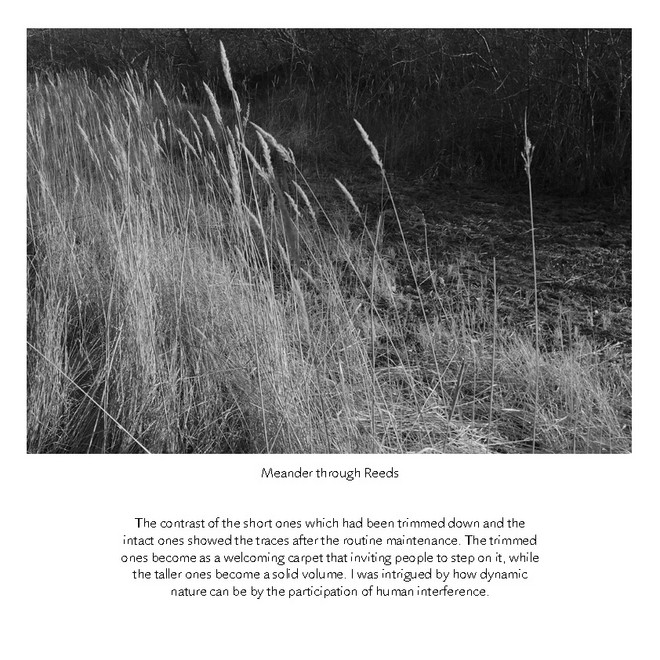

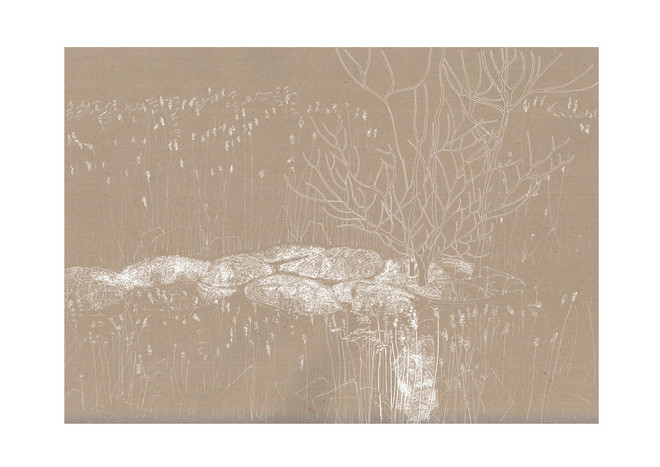
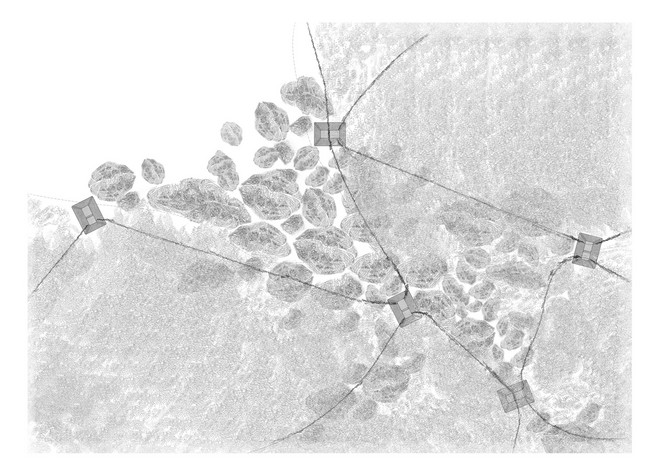
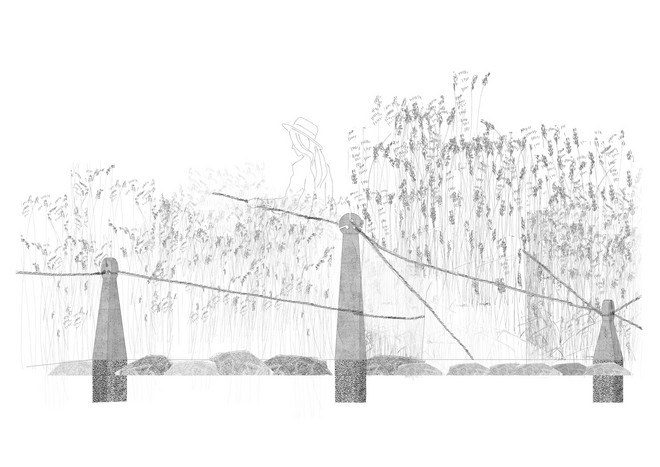
Report: Learning from the Blind and Visually Impaired: A tactile journey in Amager Fælled
Report : Learning from the Blind and Visually impaired: A tactile journey in Amager Fælled
Det Kongelige Akademi understøtter FN’s verdensmål
Siden 2017 har Det Kongelige Akademi arbejdet med FN’s verdensmål. Det afspejler sig i forskning, undervisning og afgangsprojekter. Dette projekt har forholdt sig til følgende FN-mål

